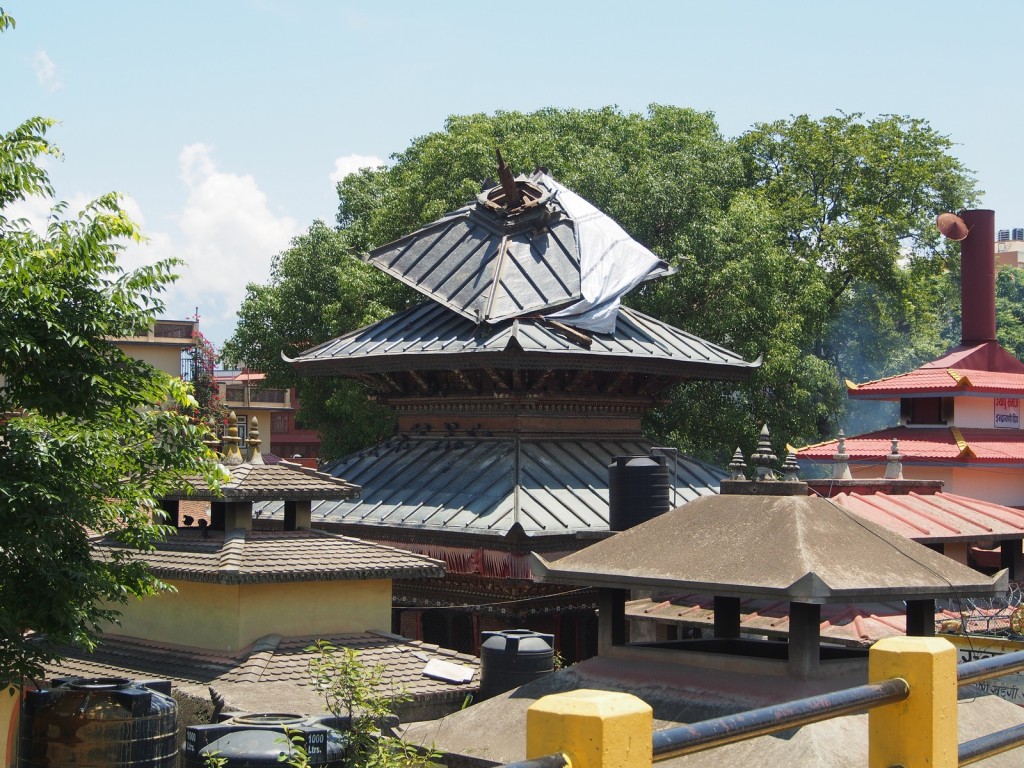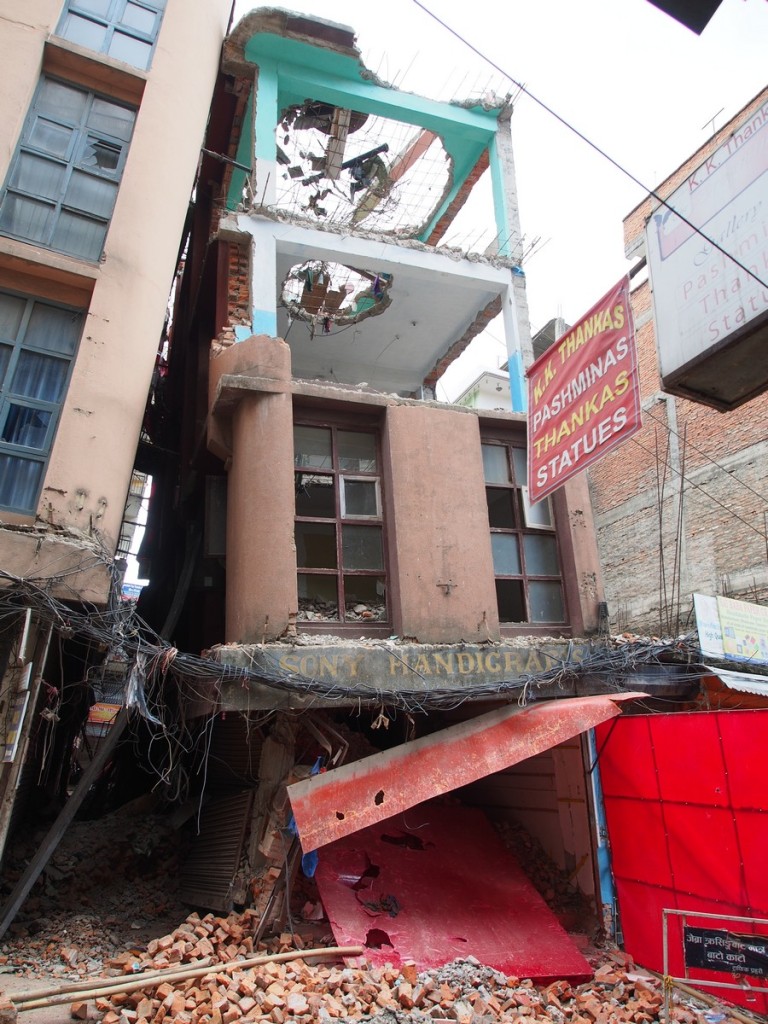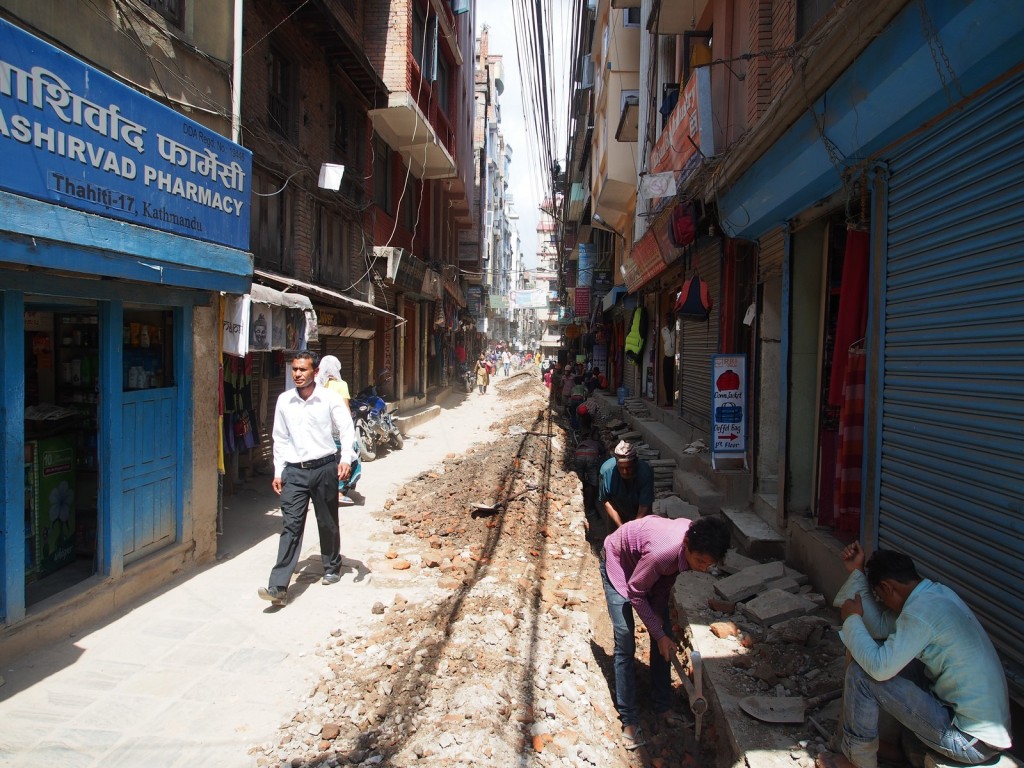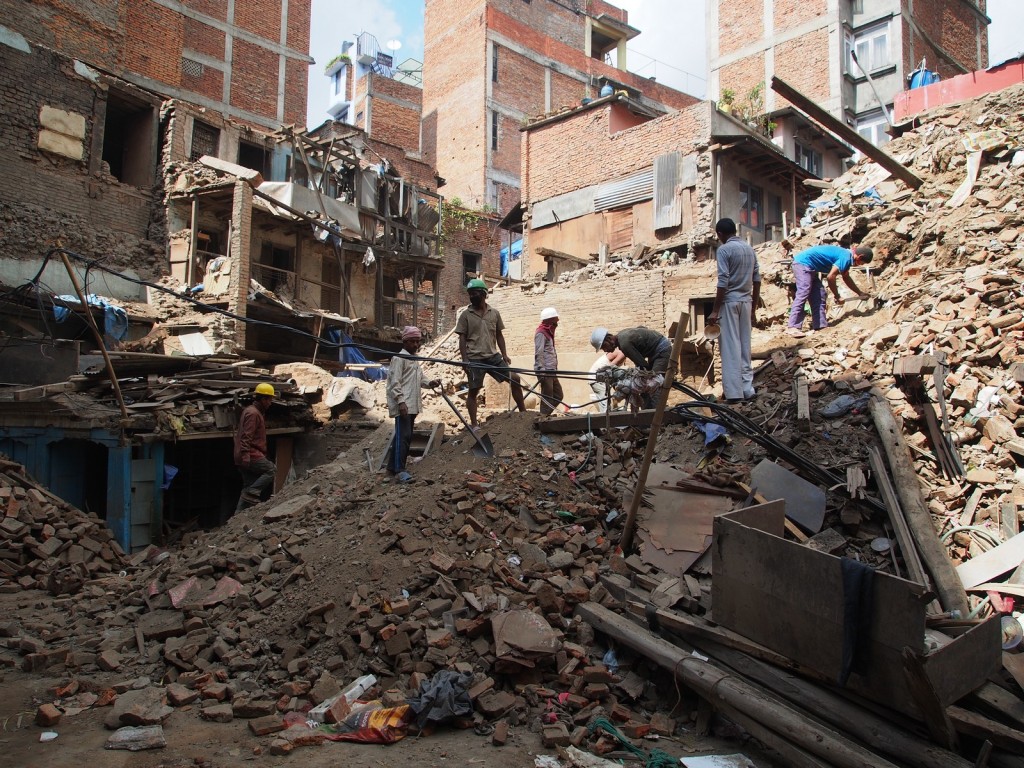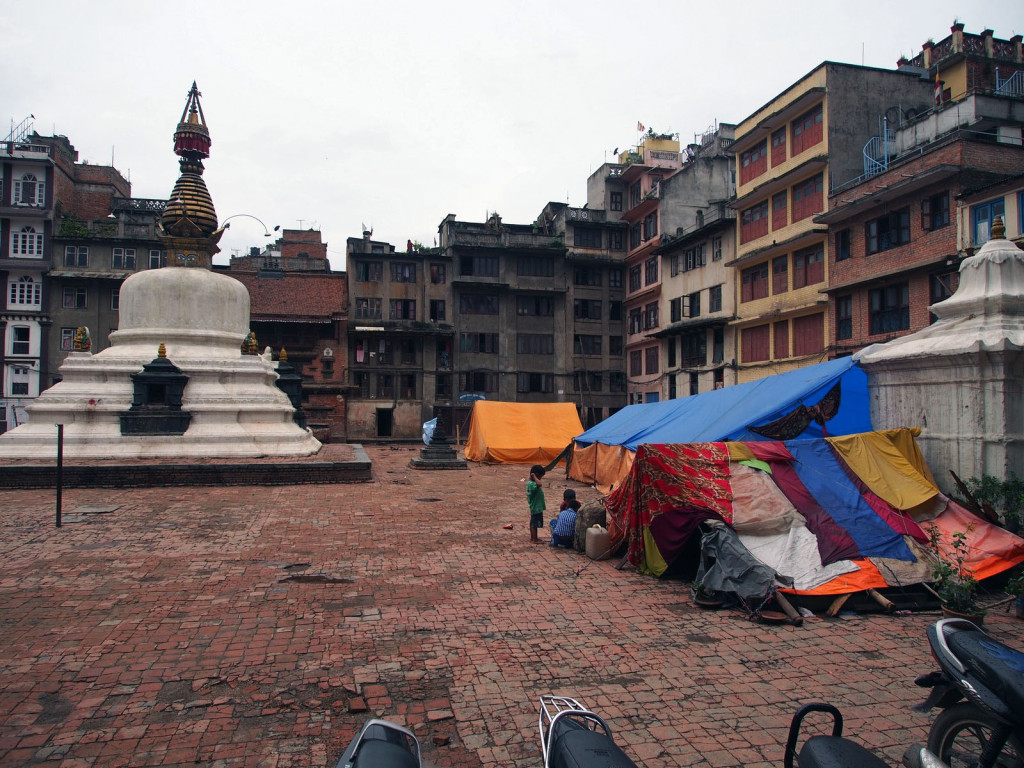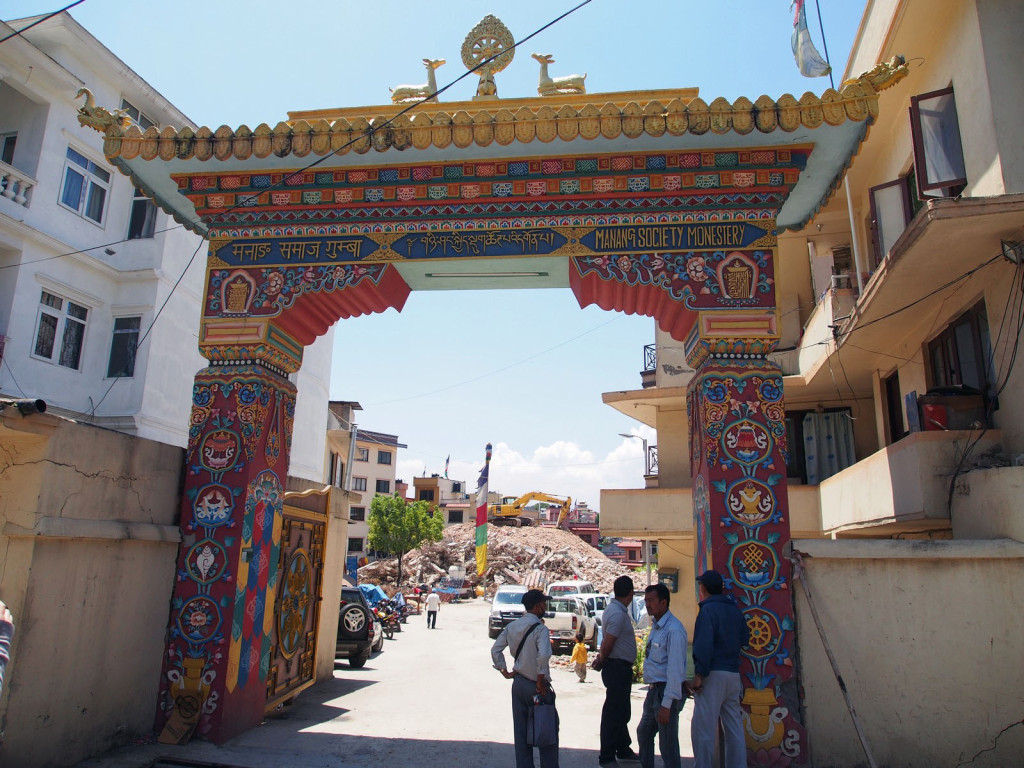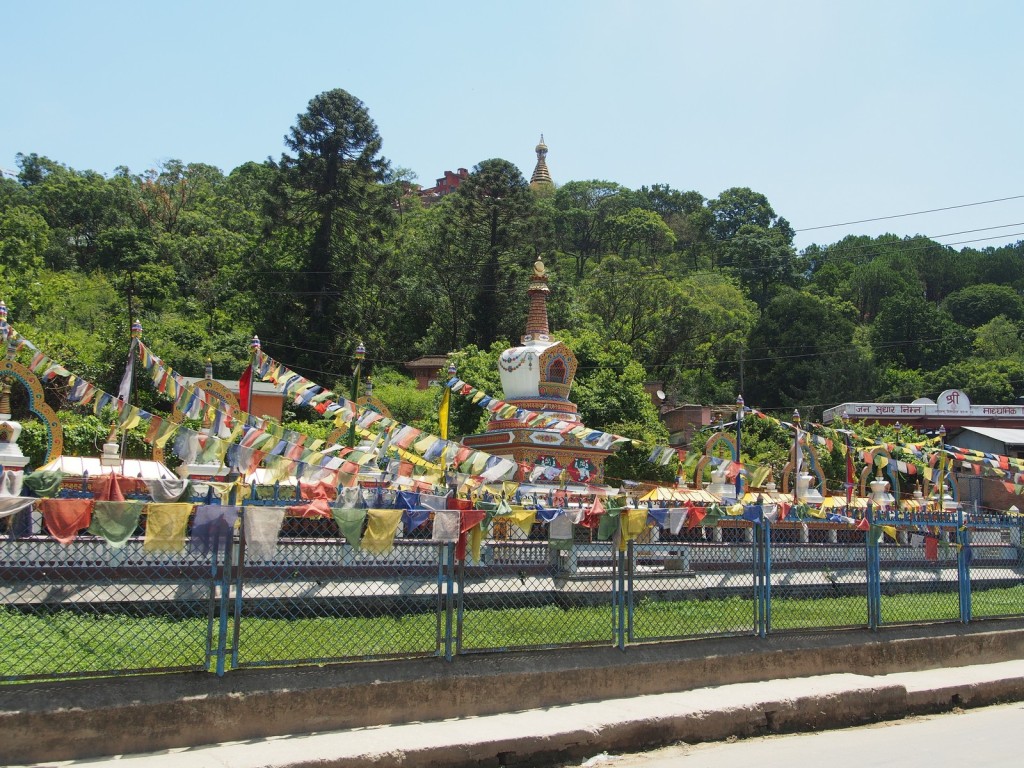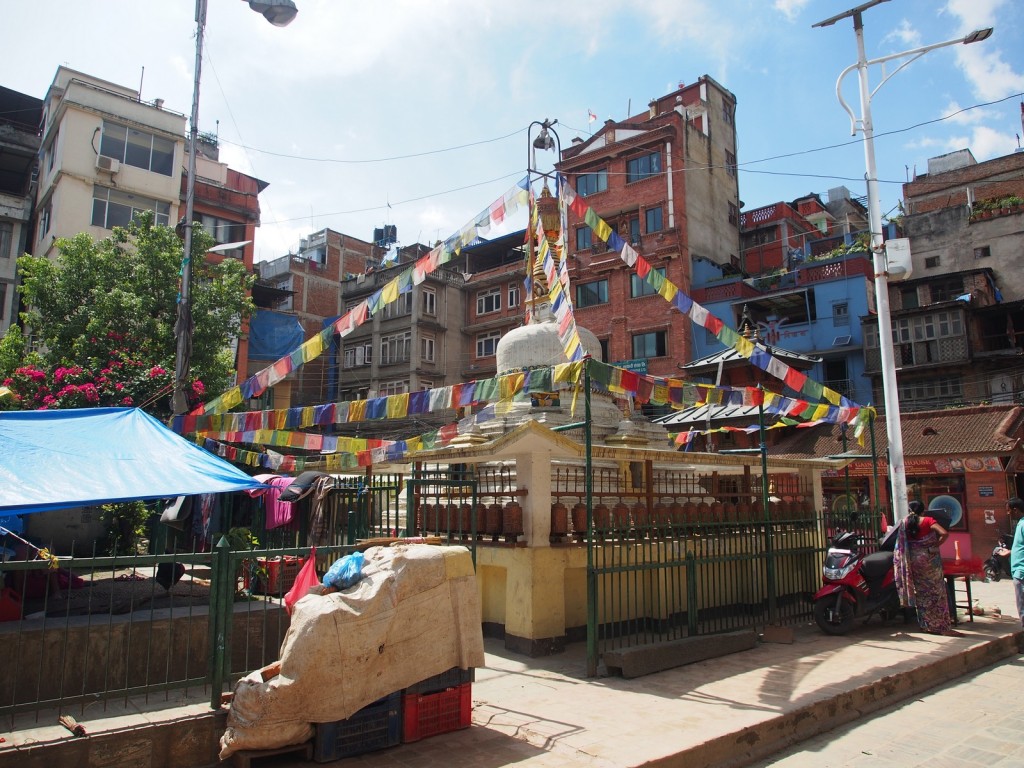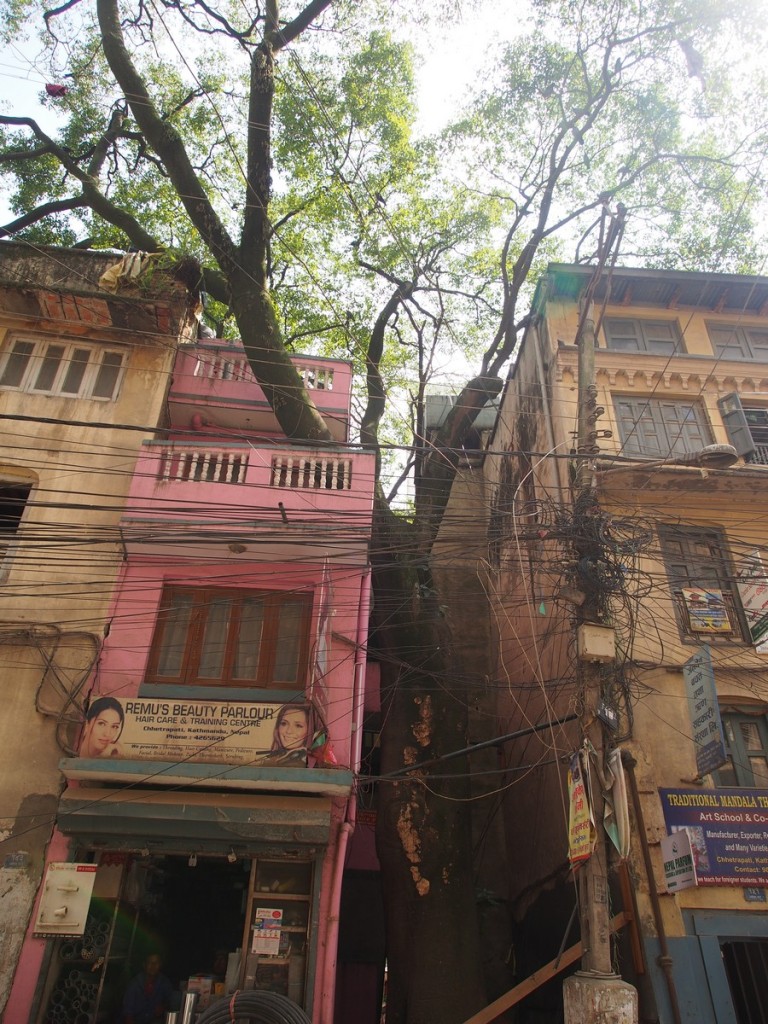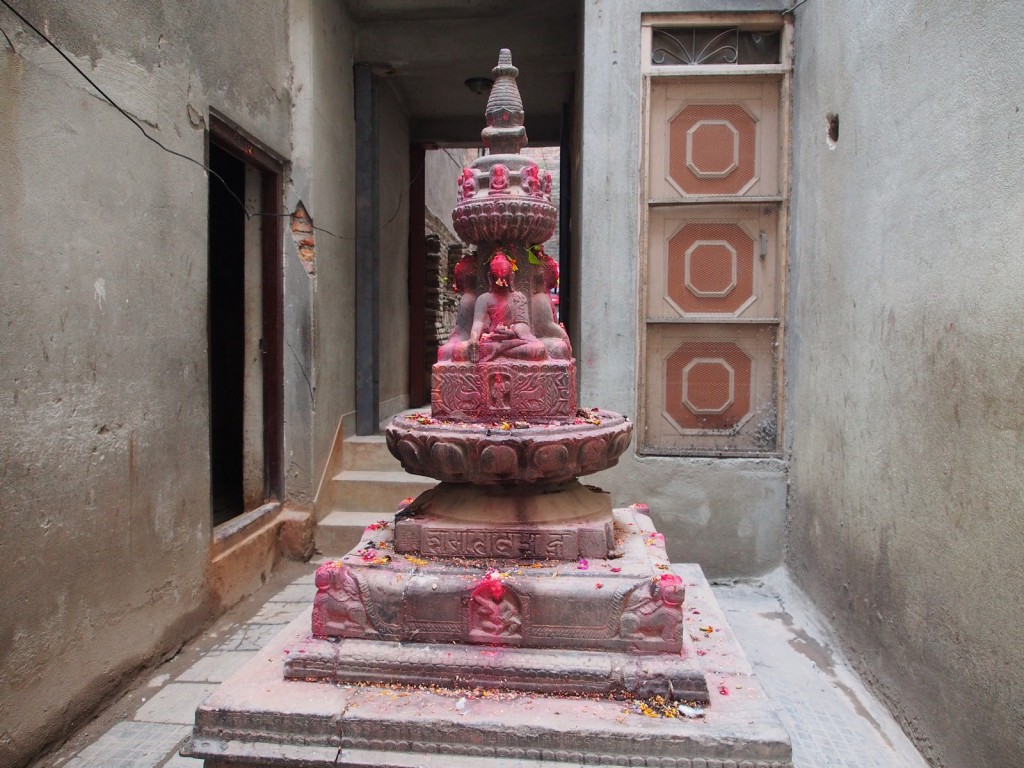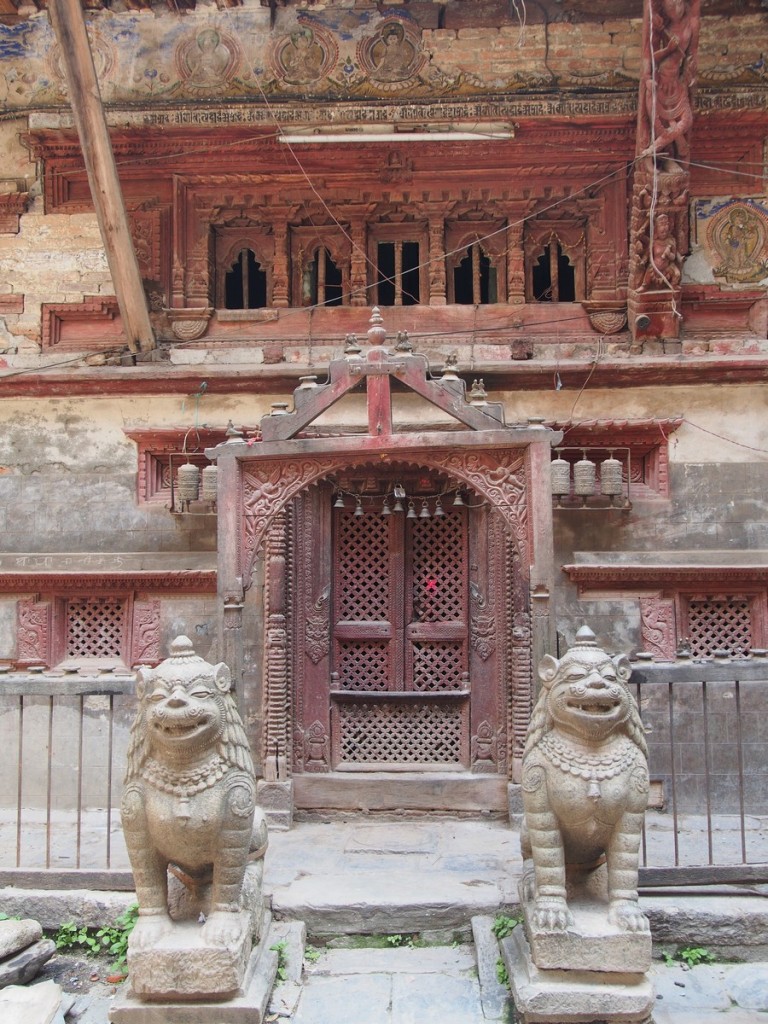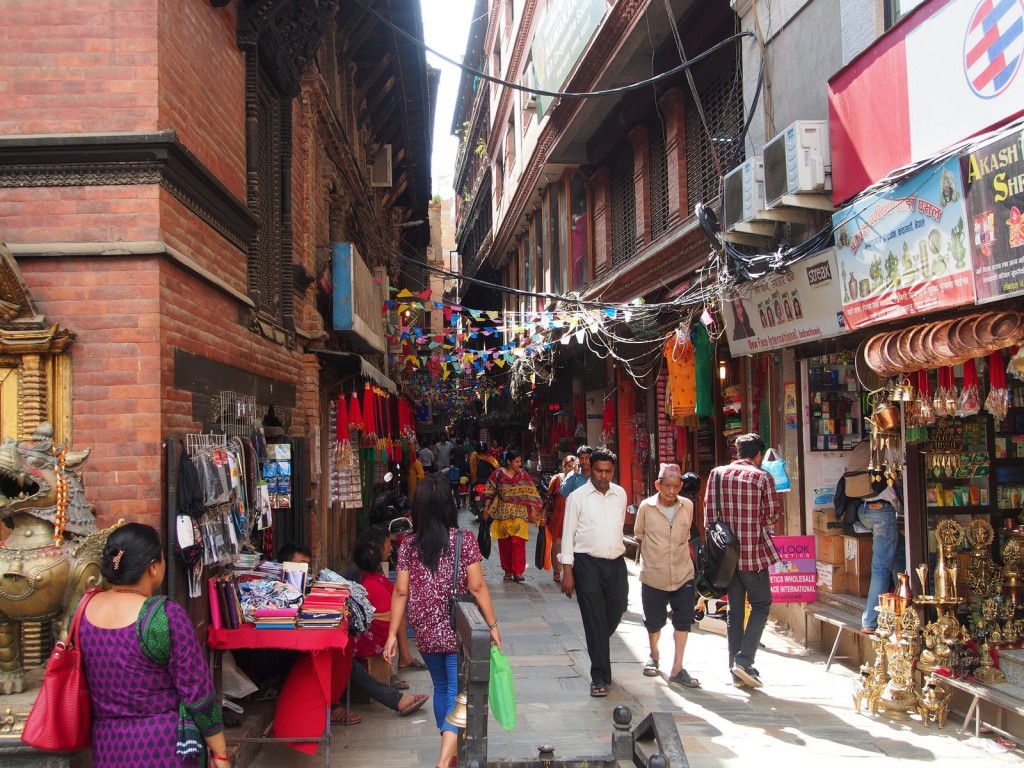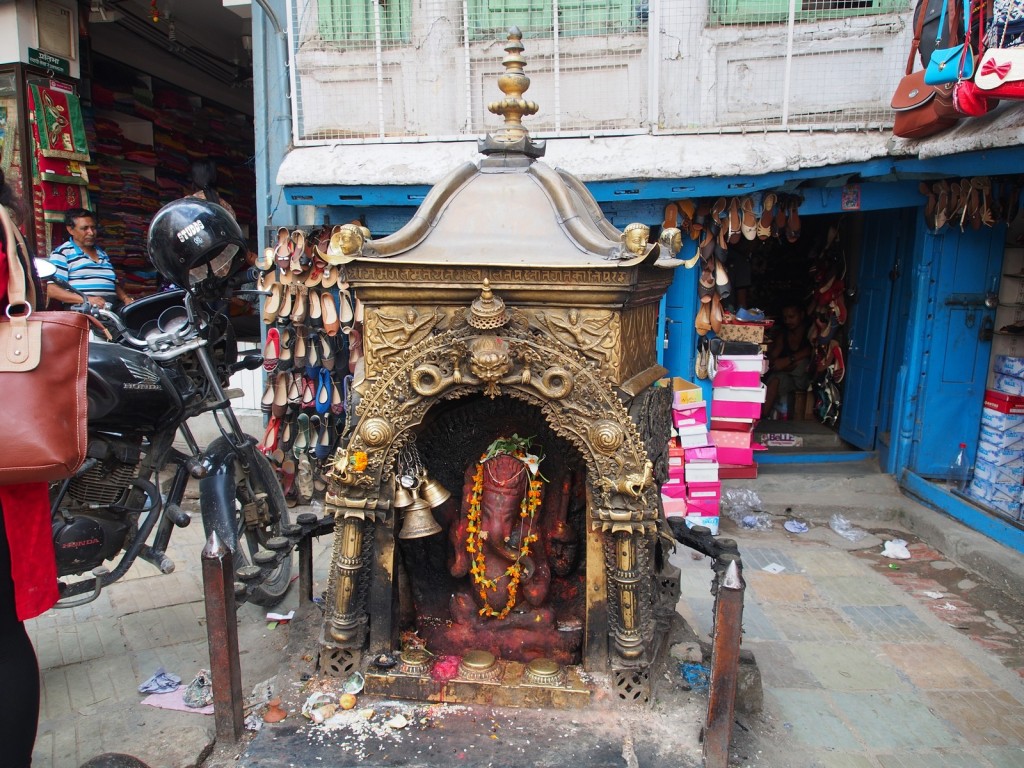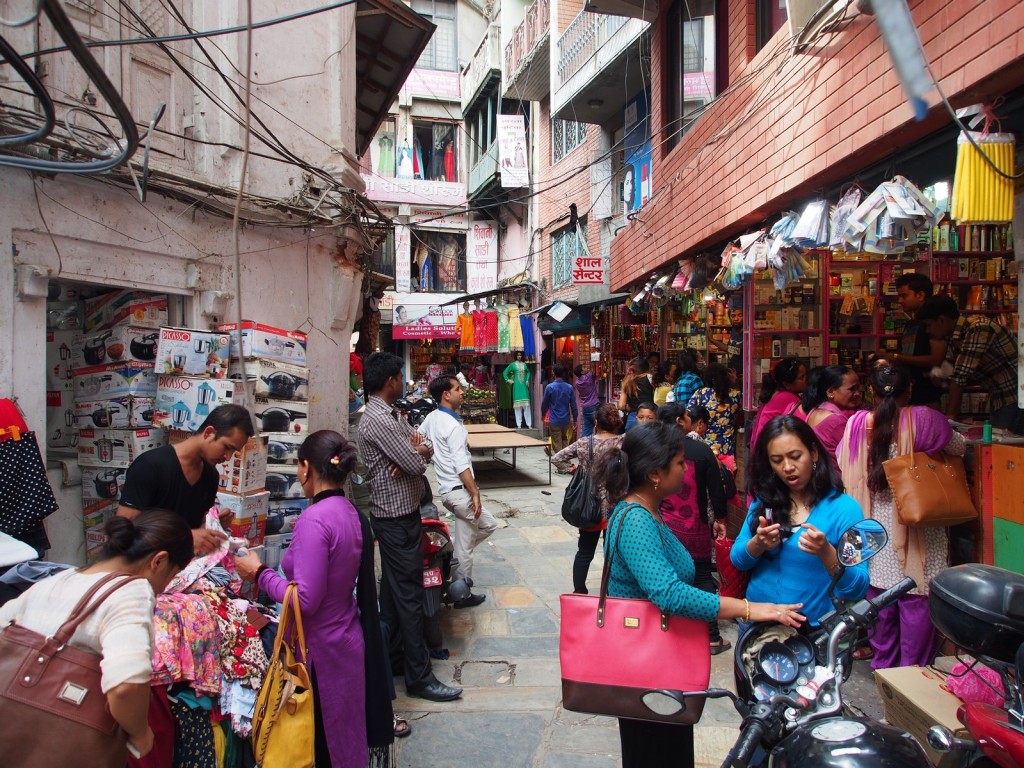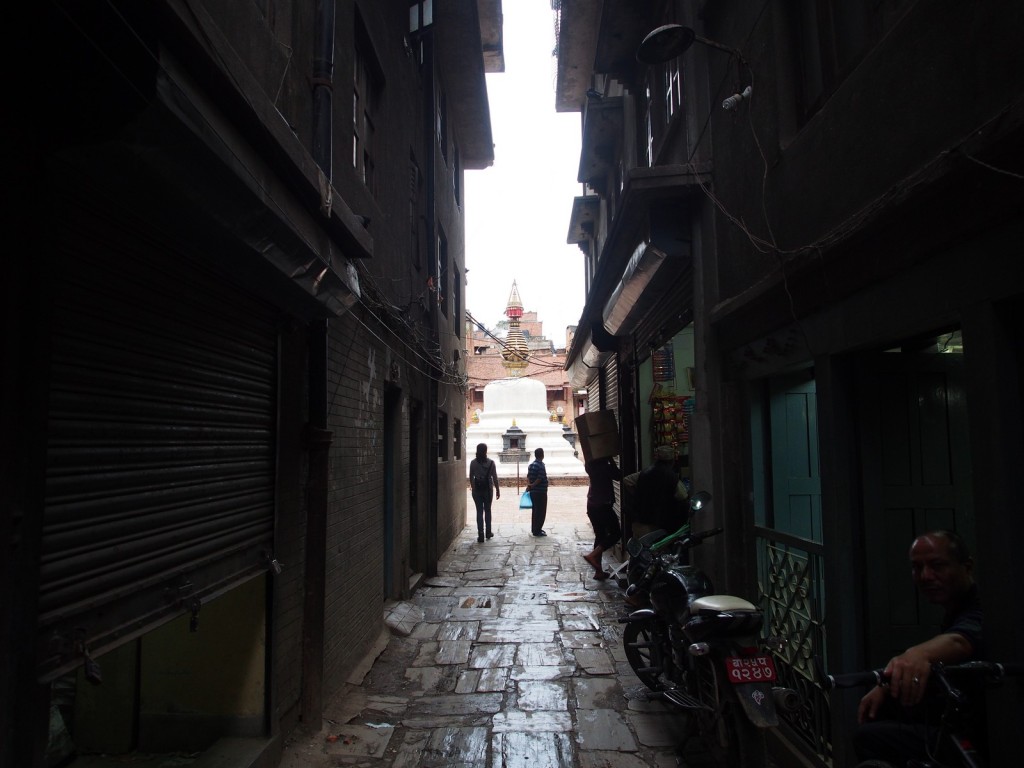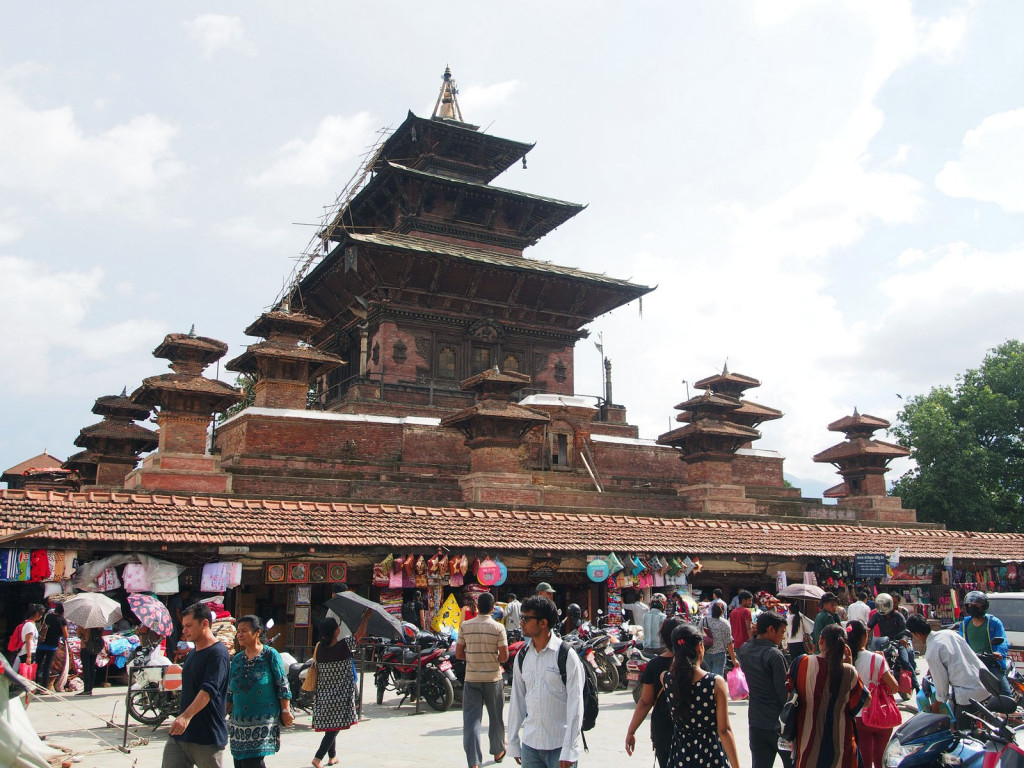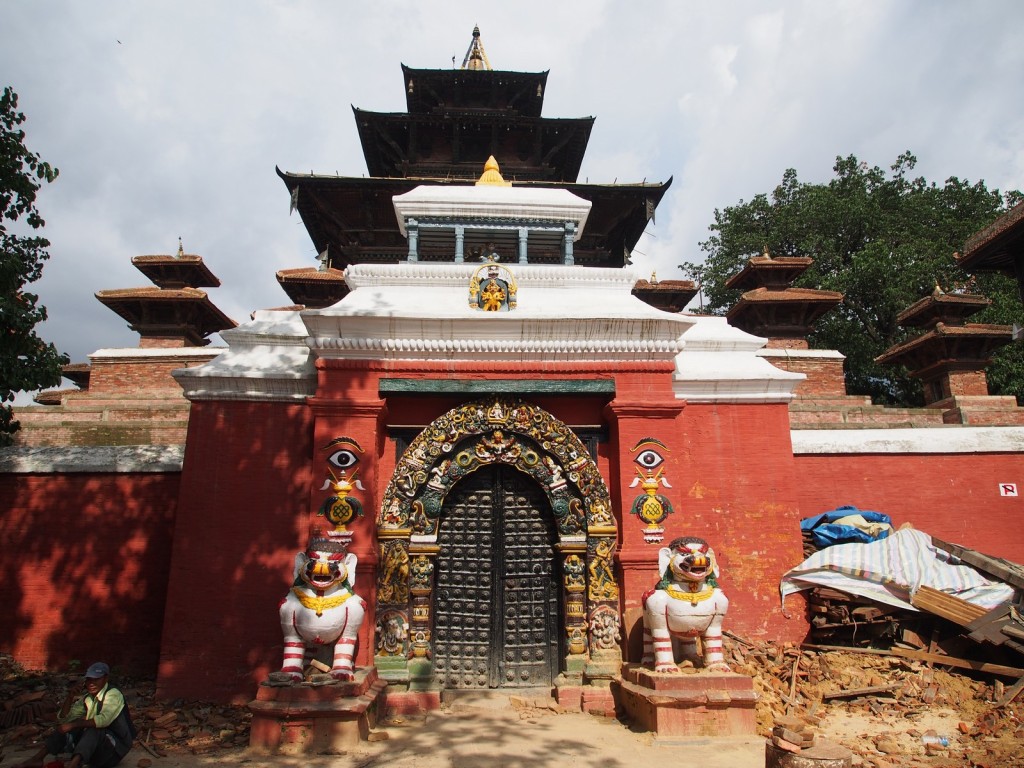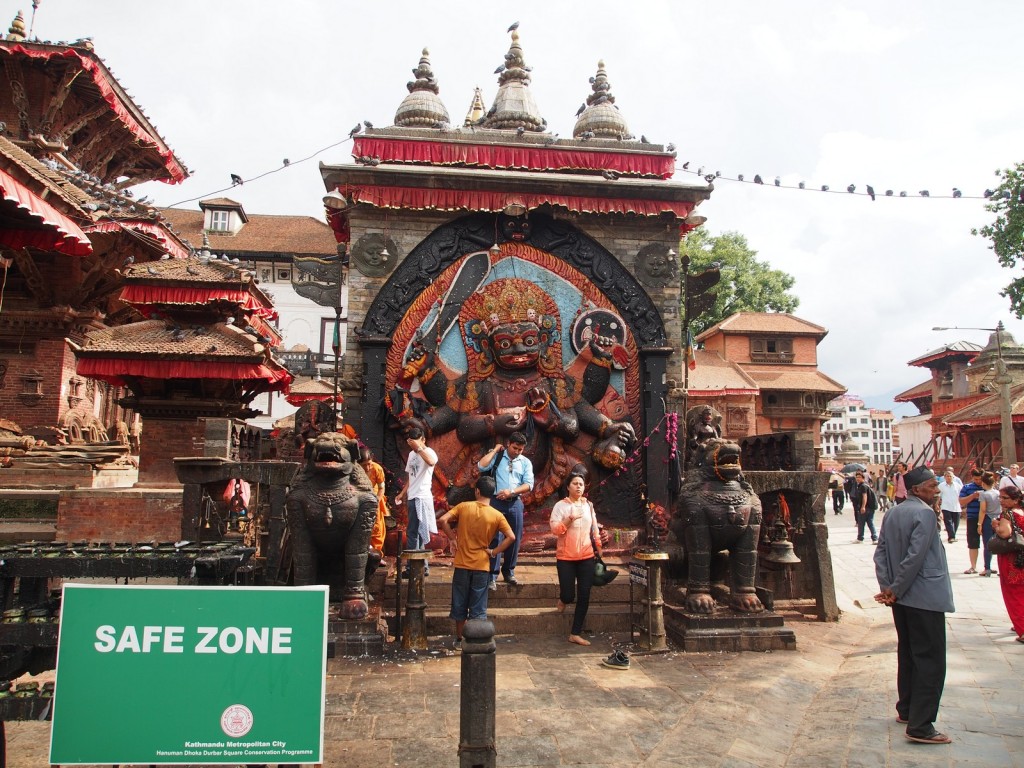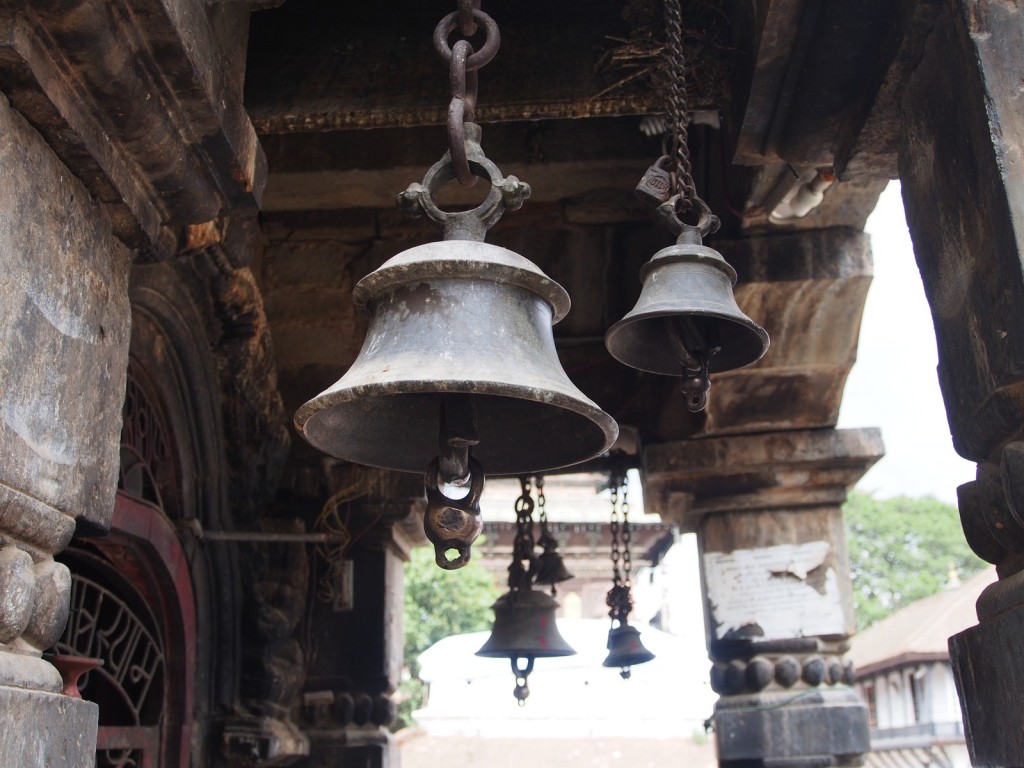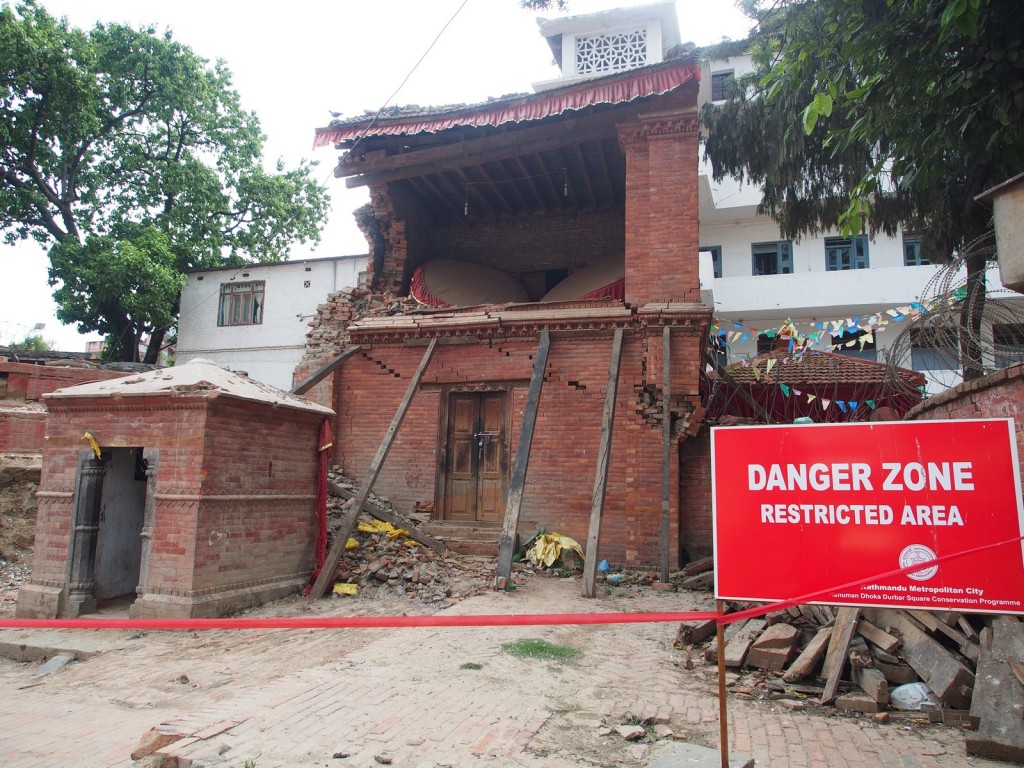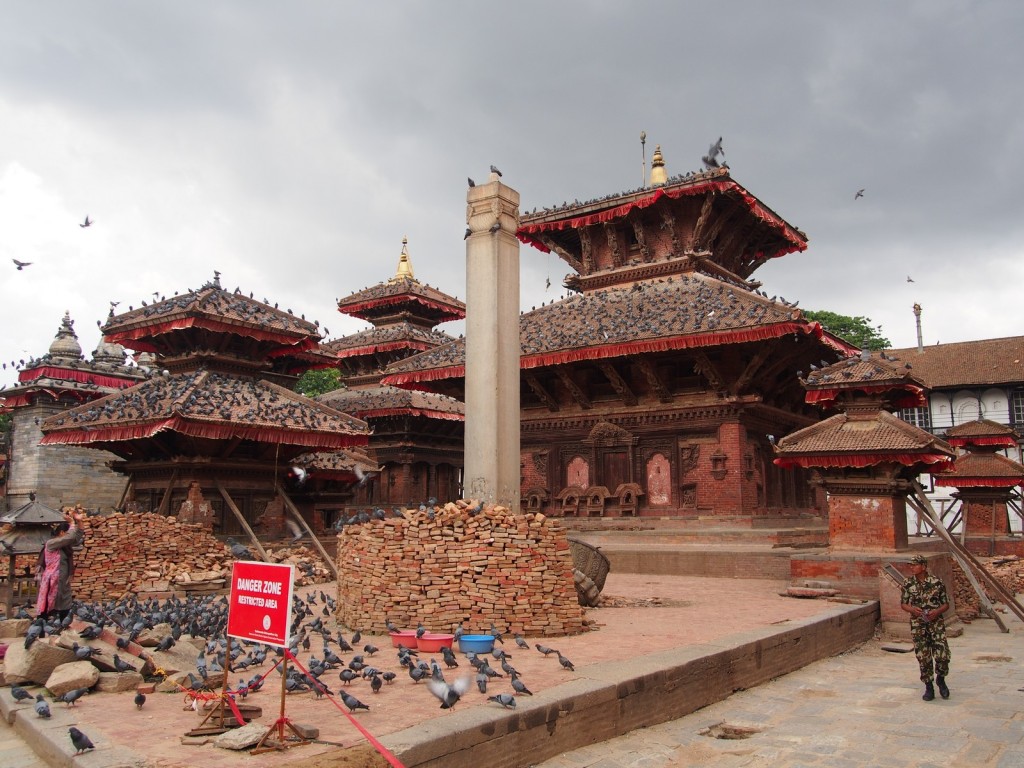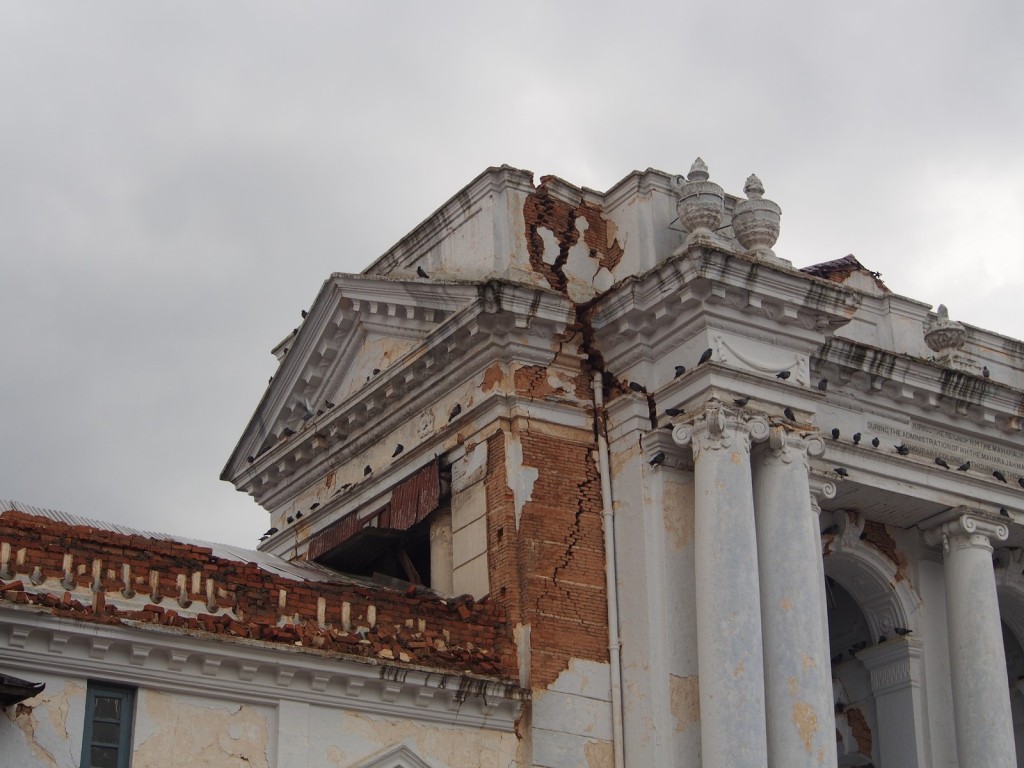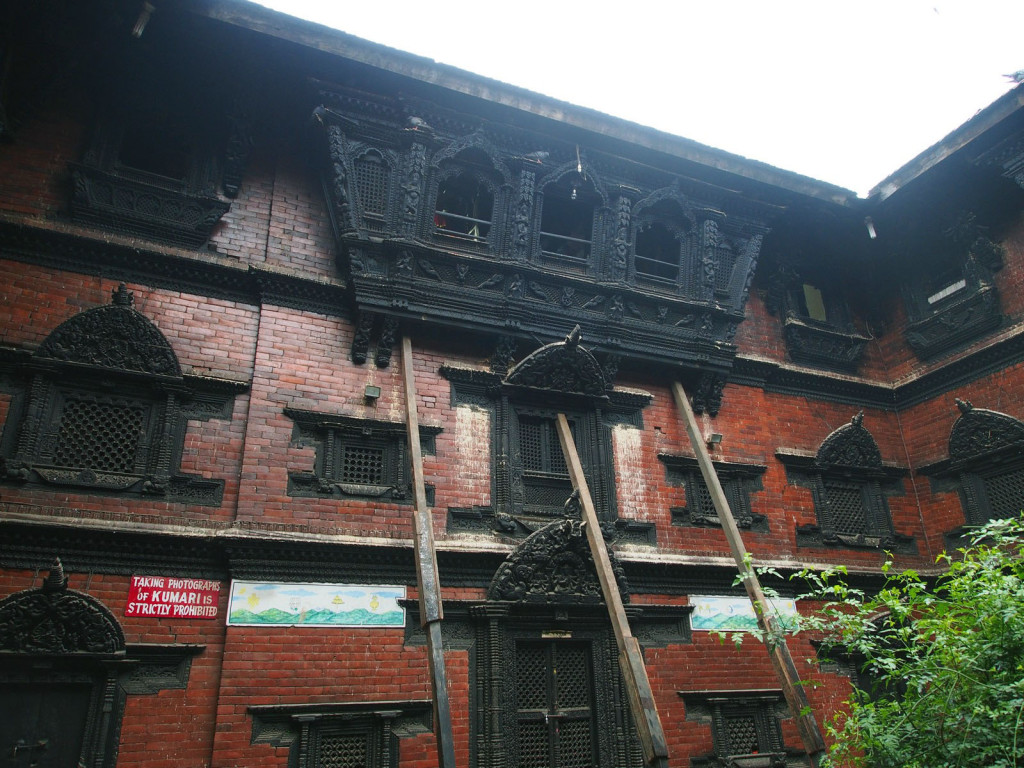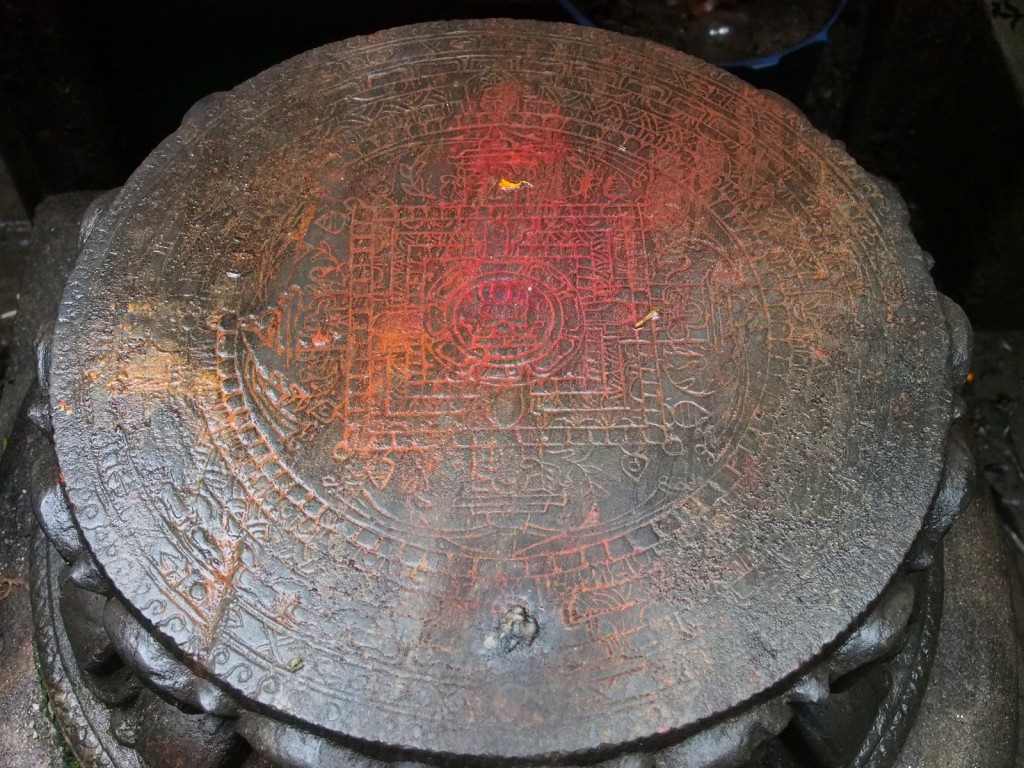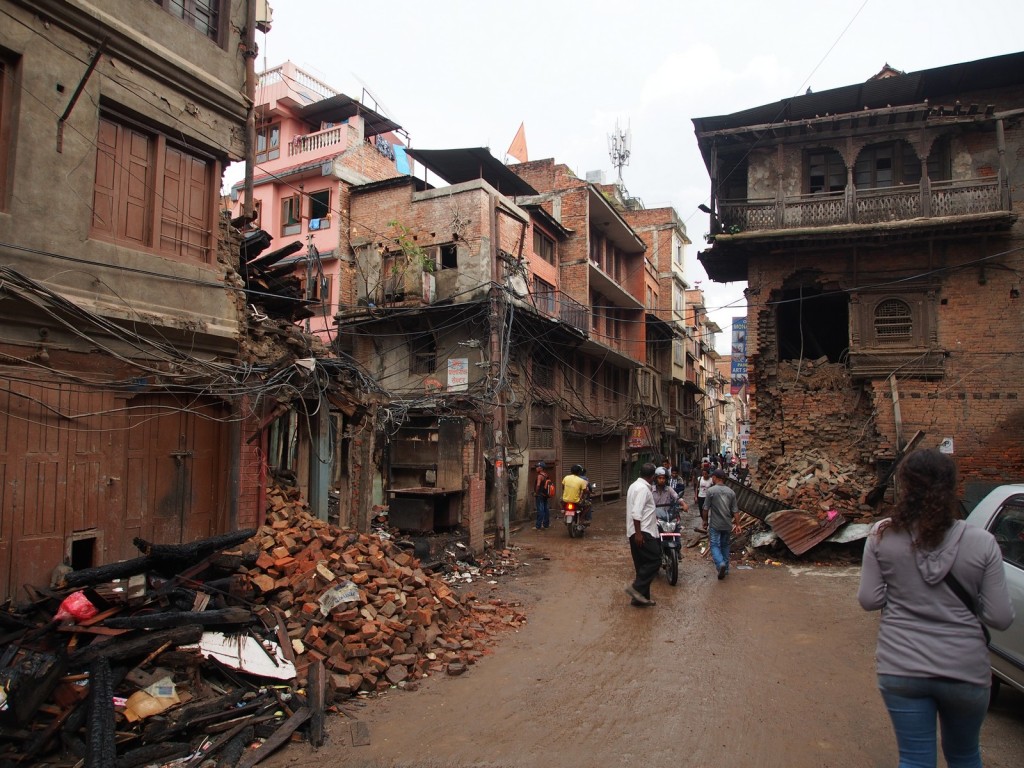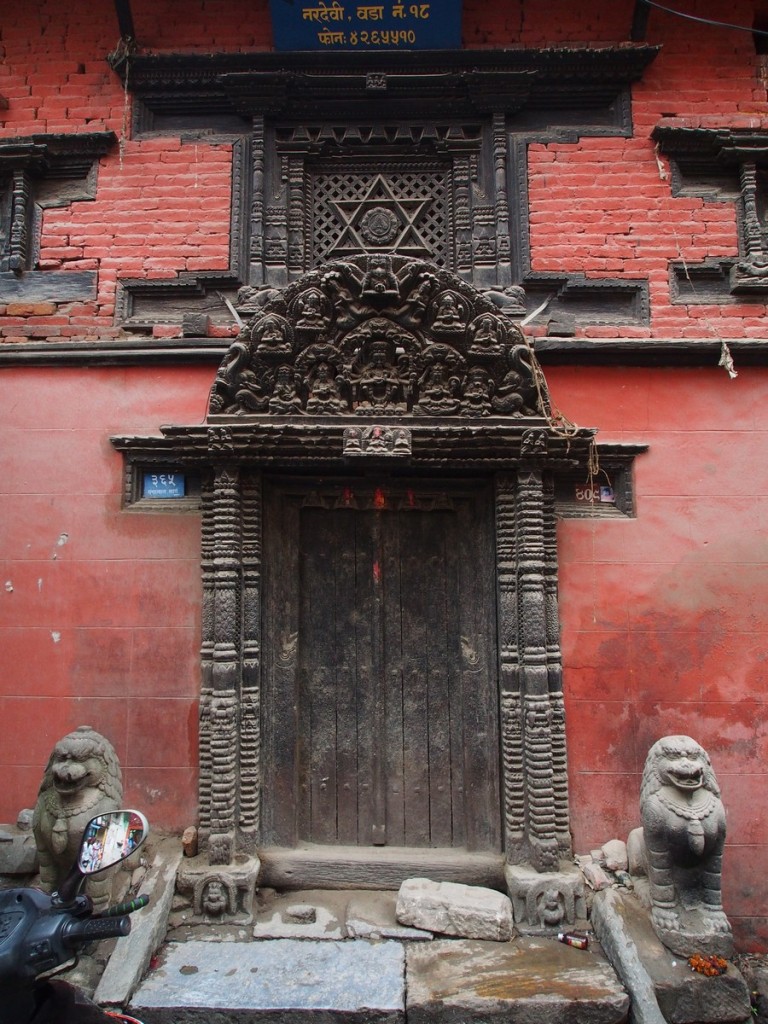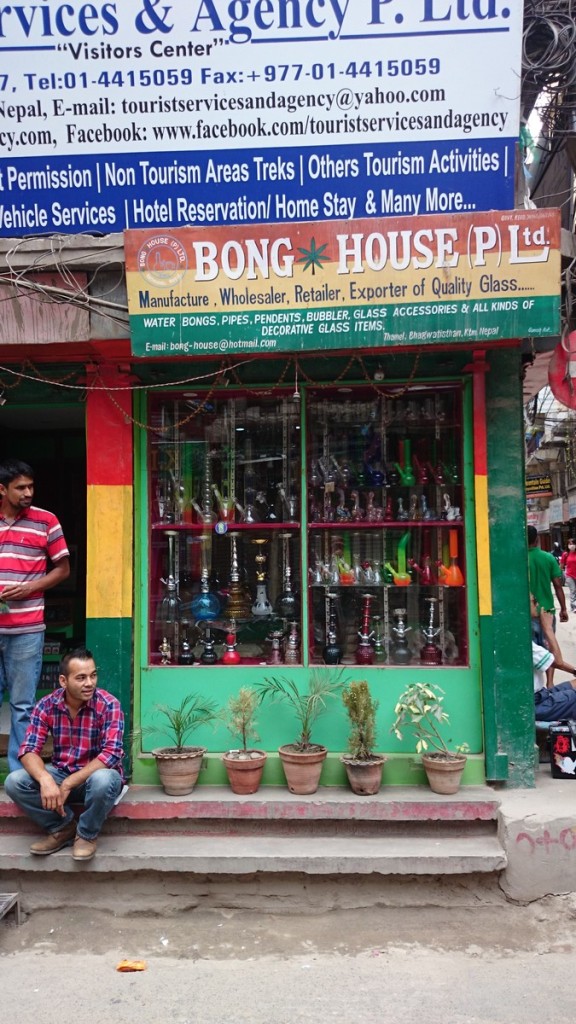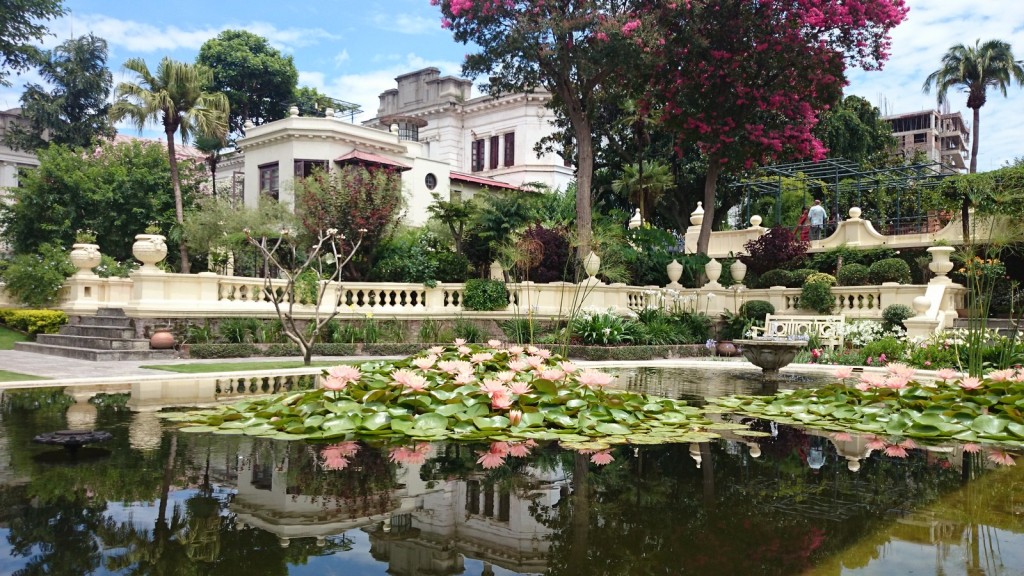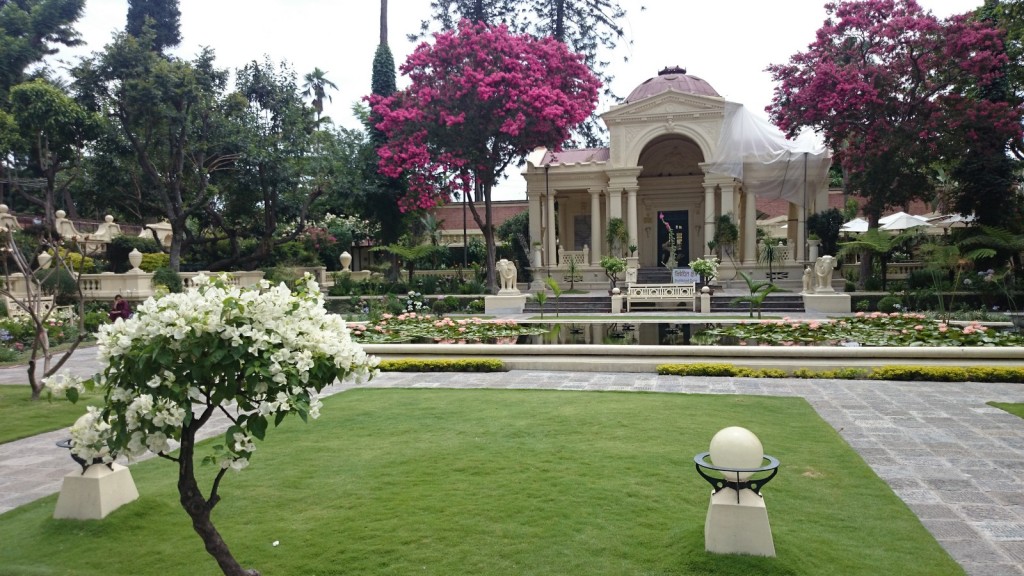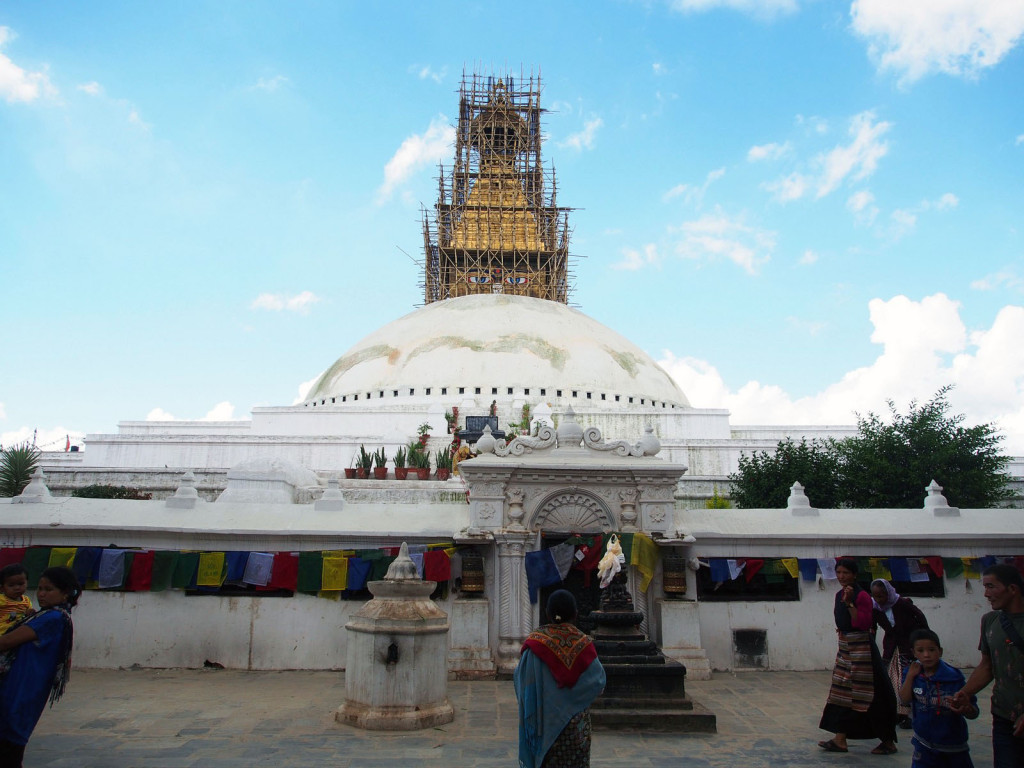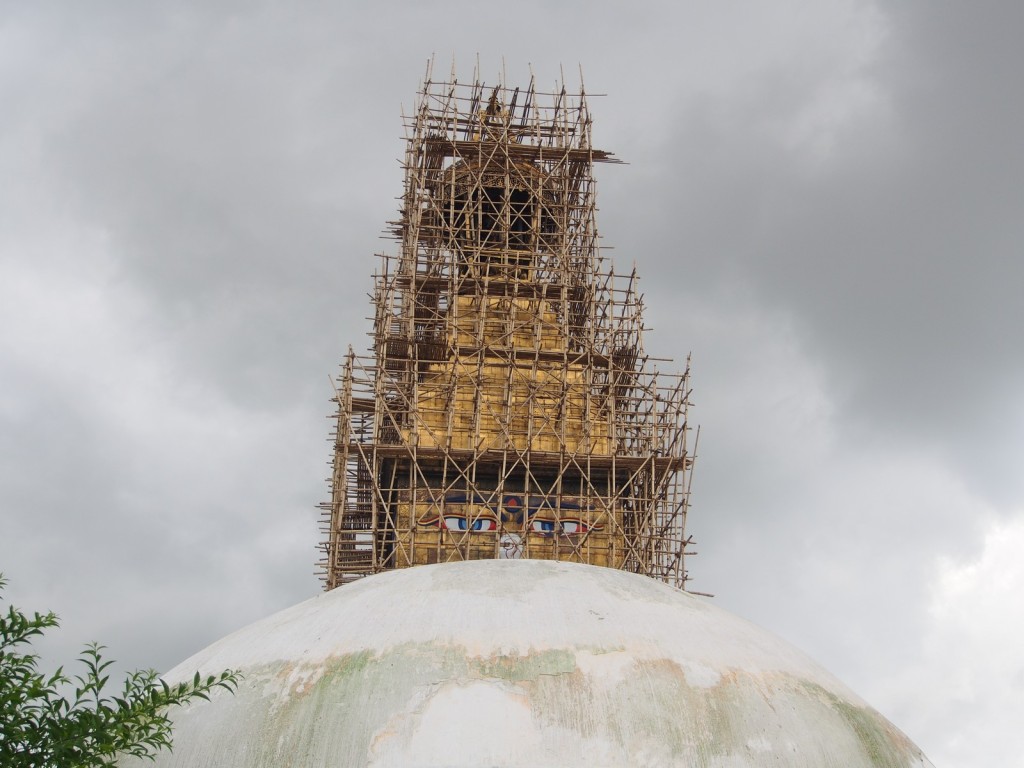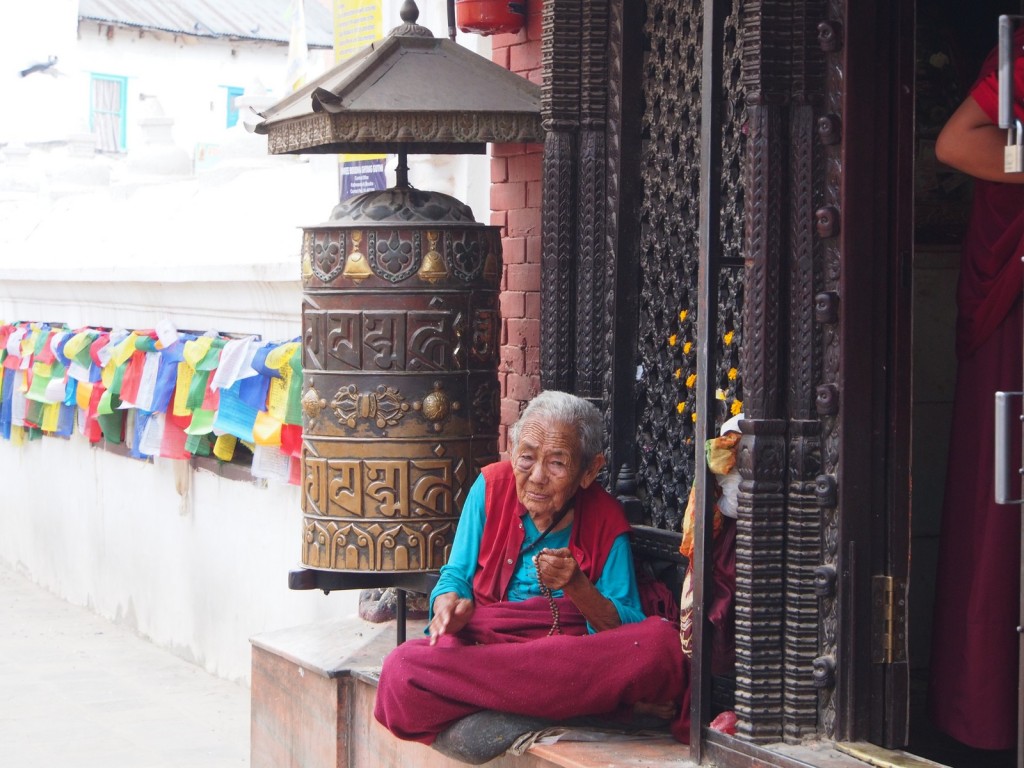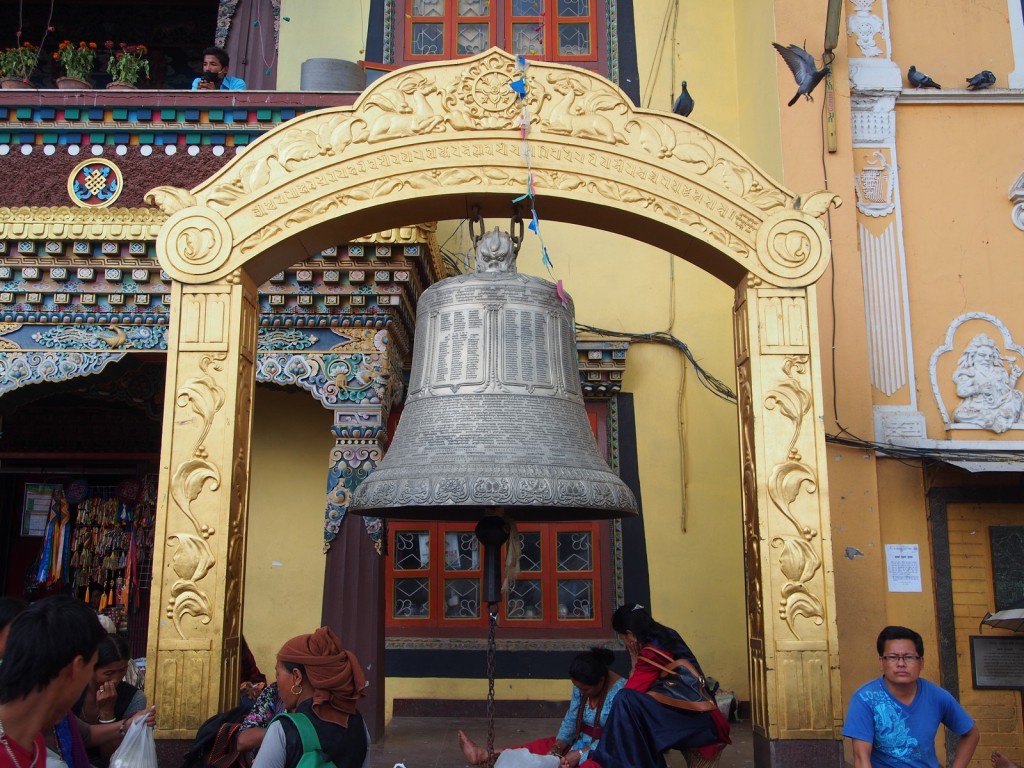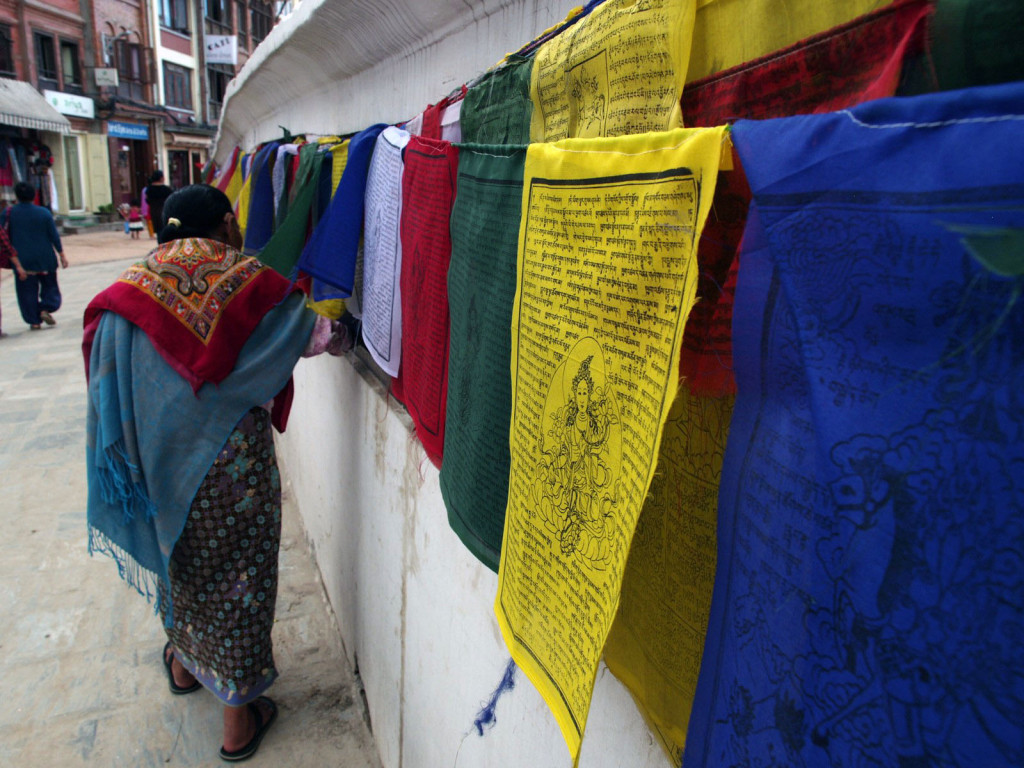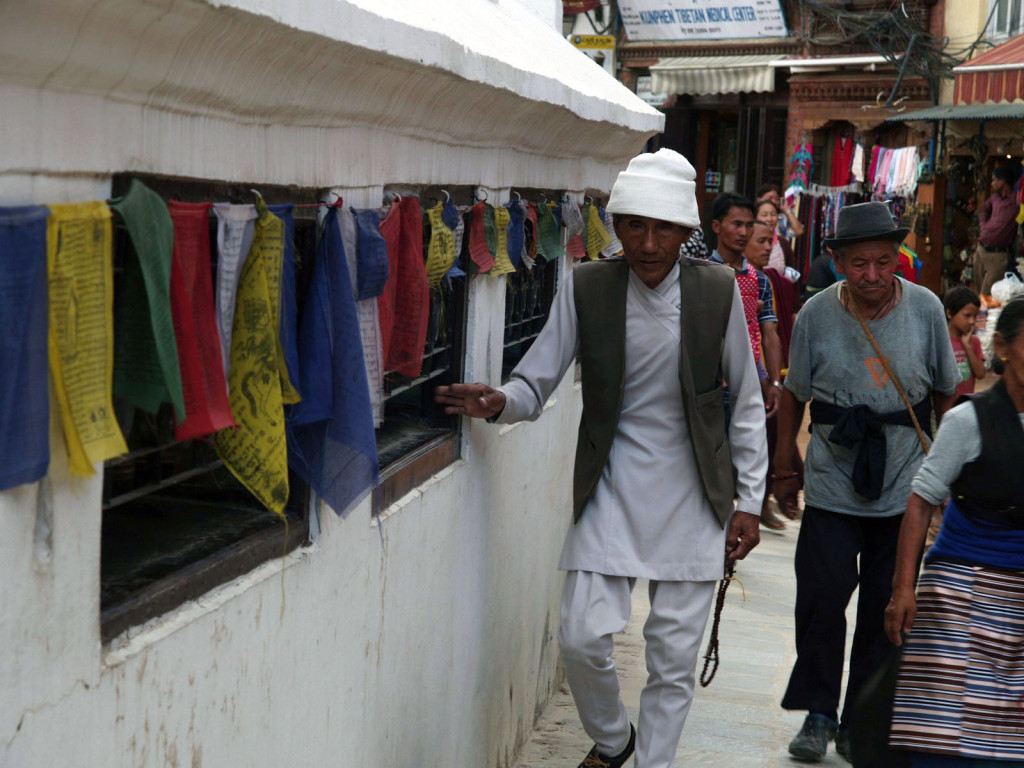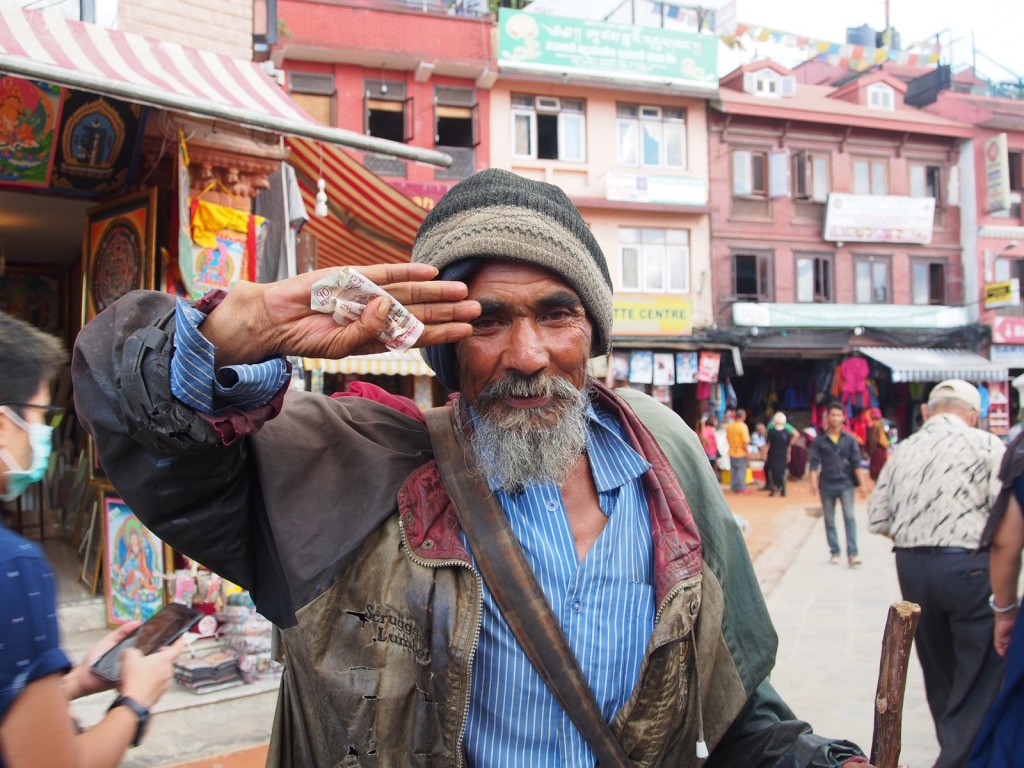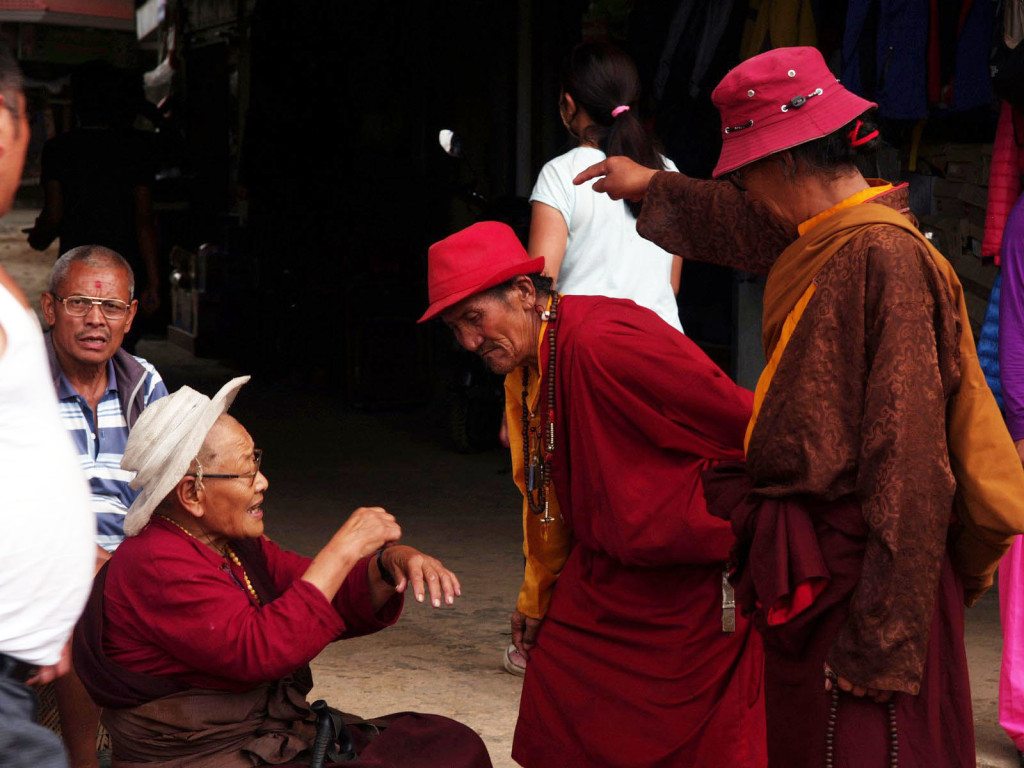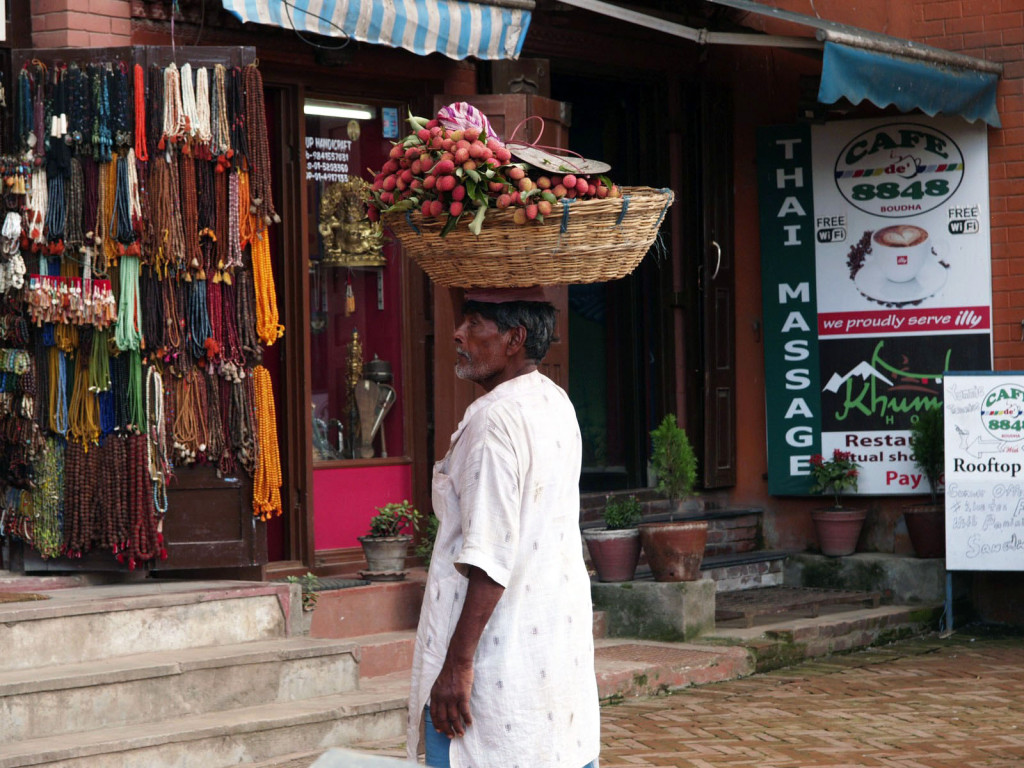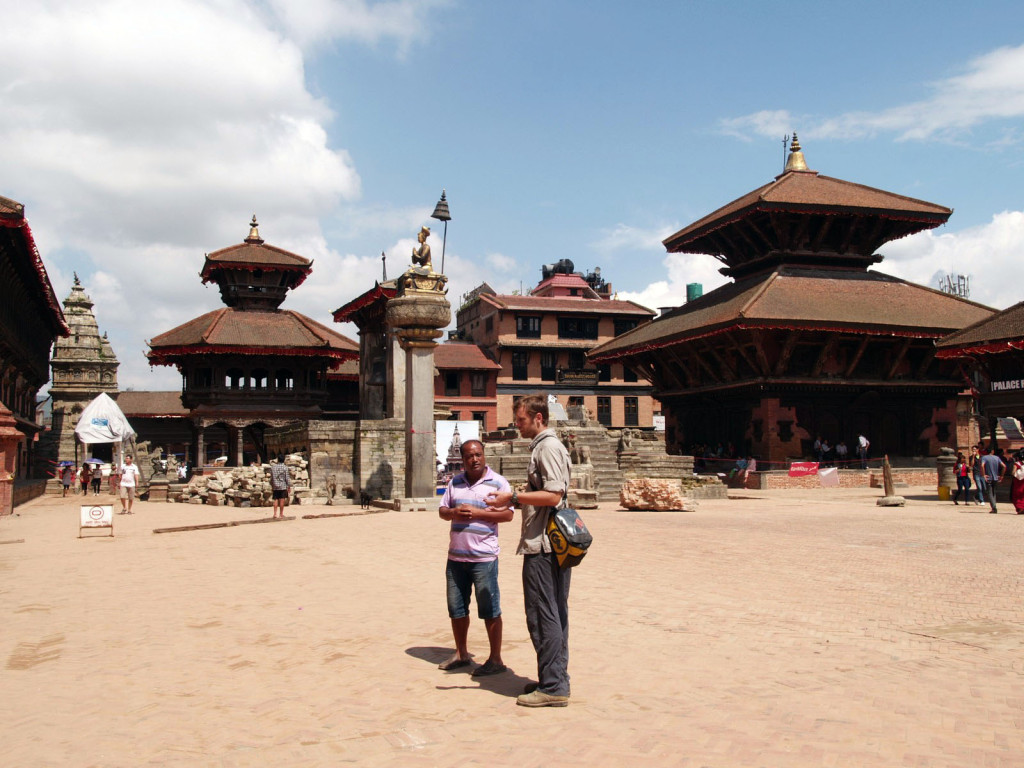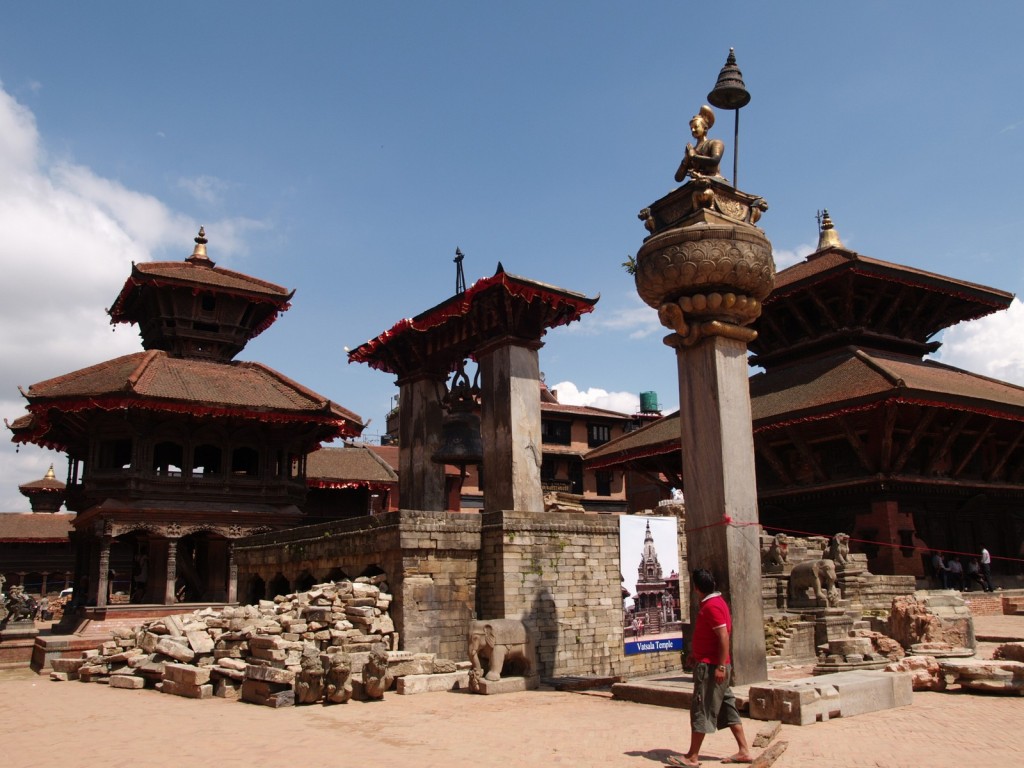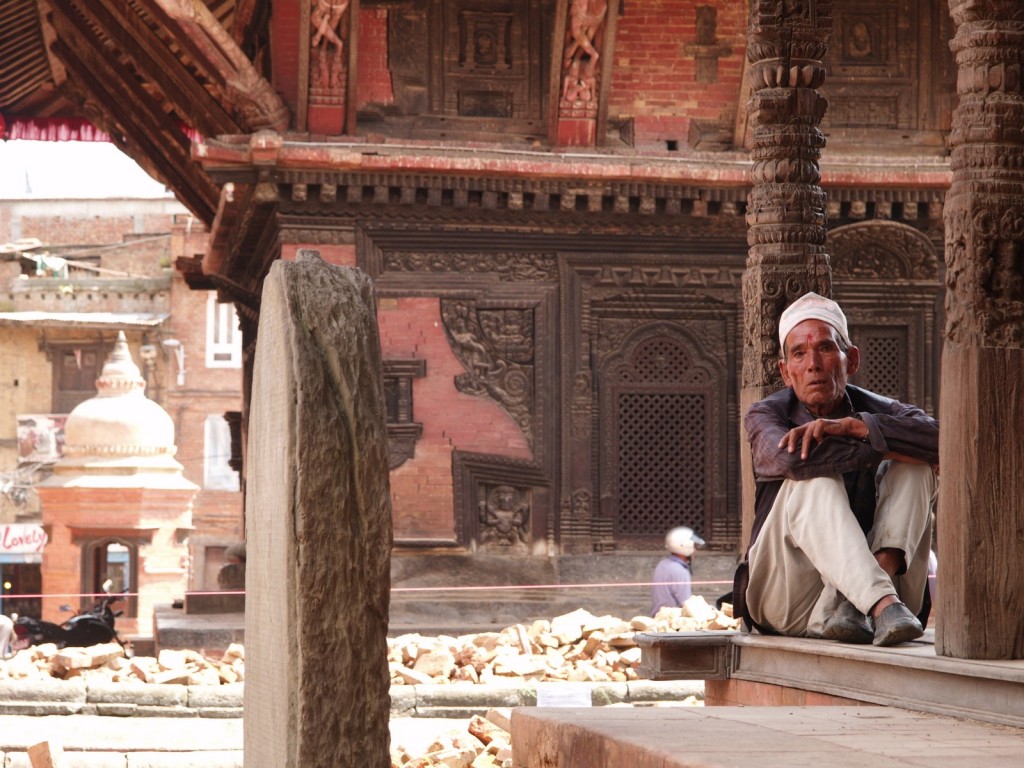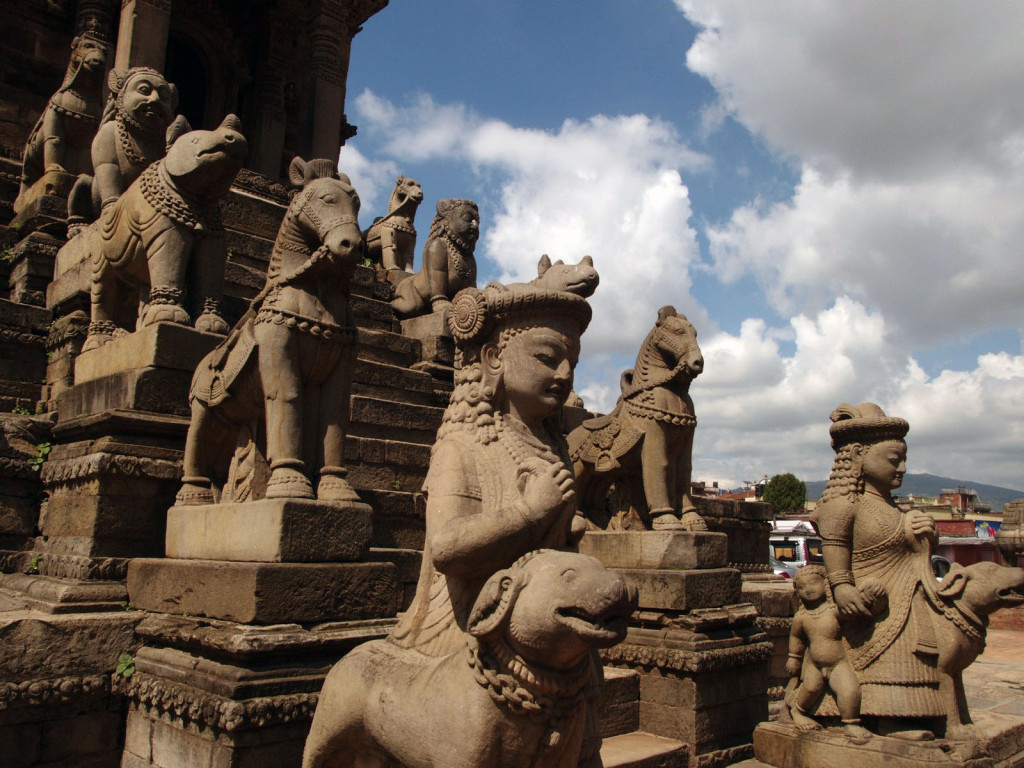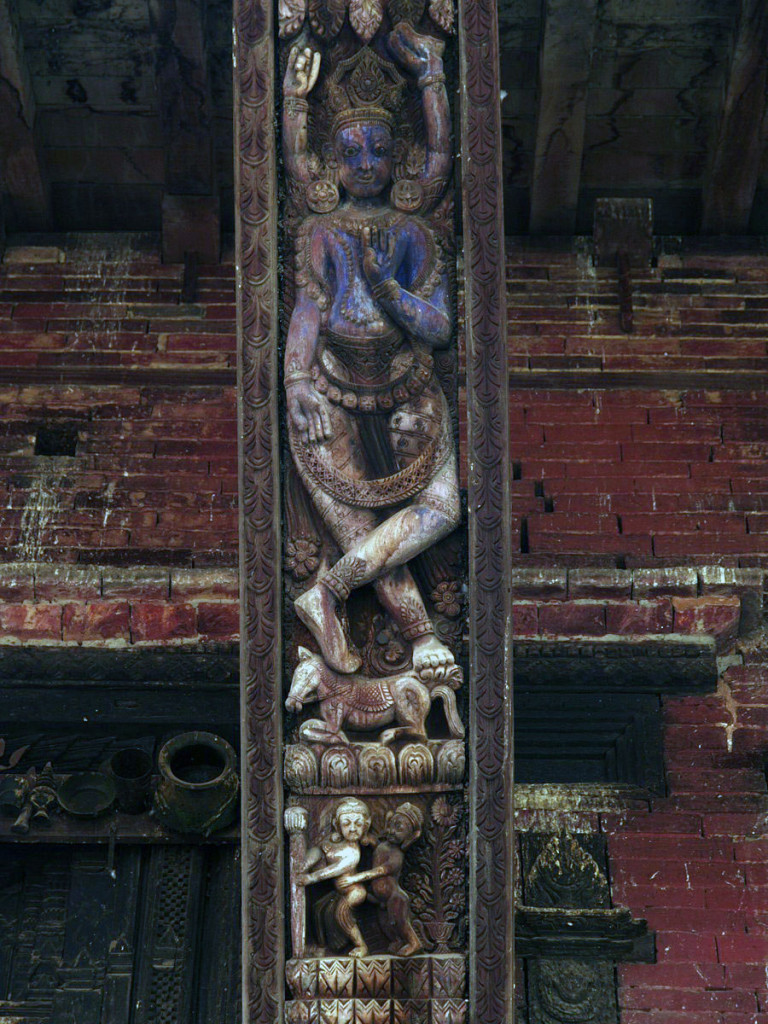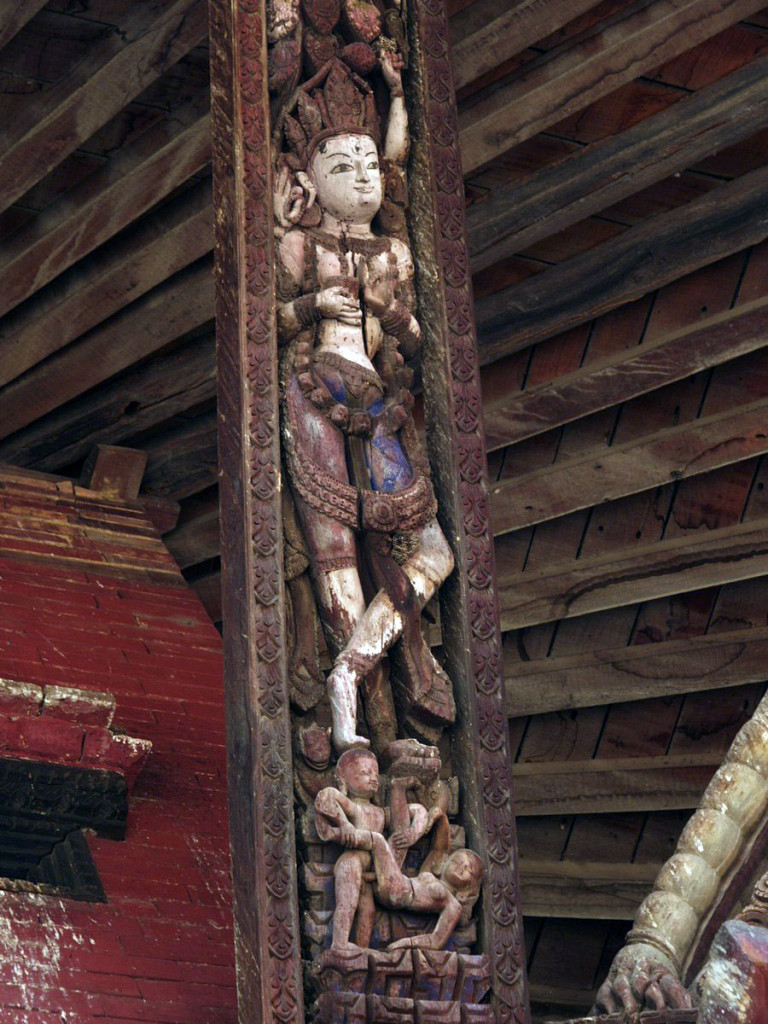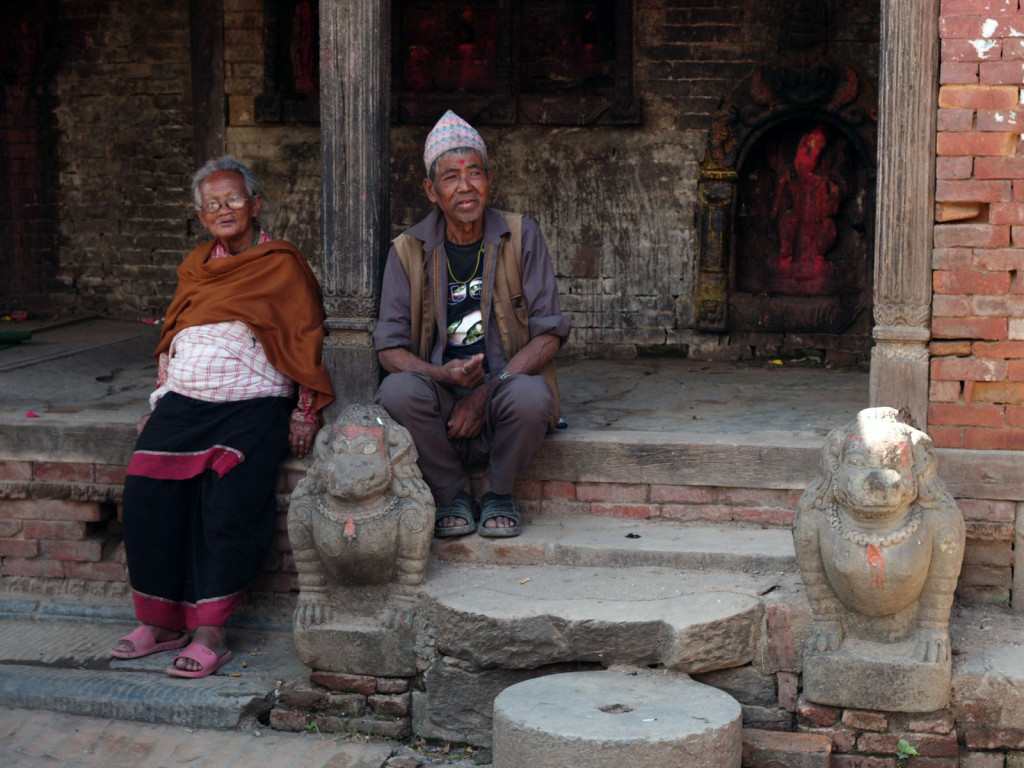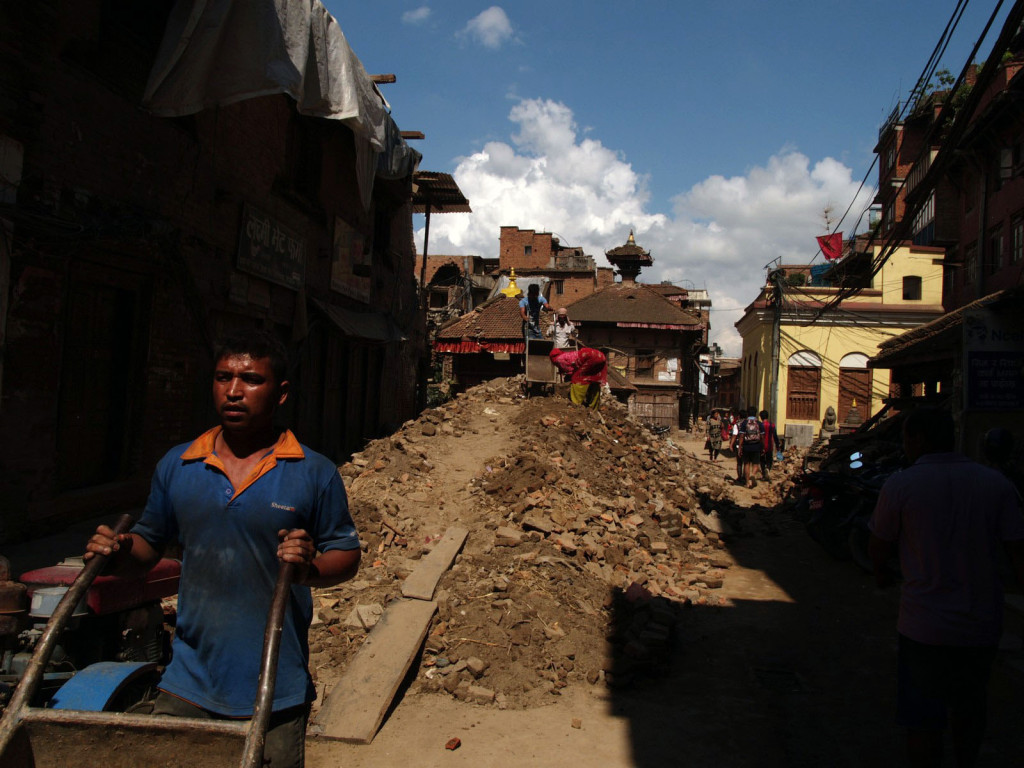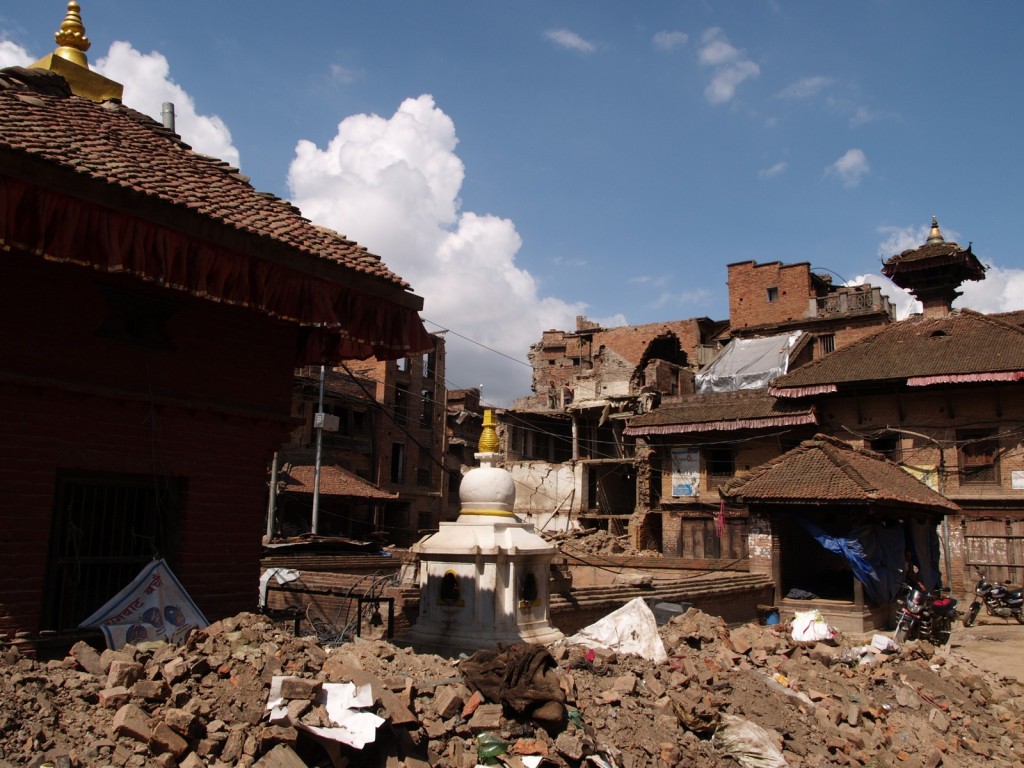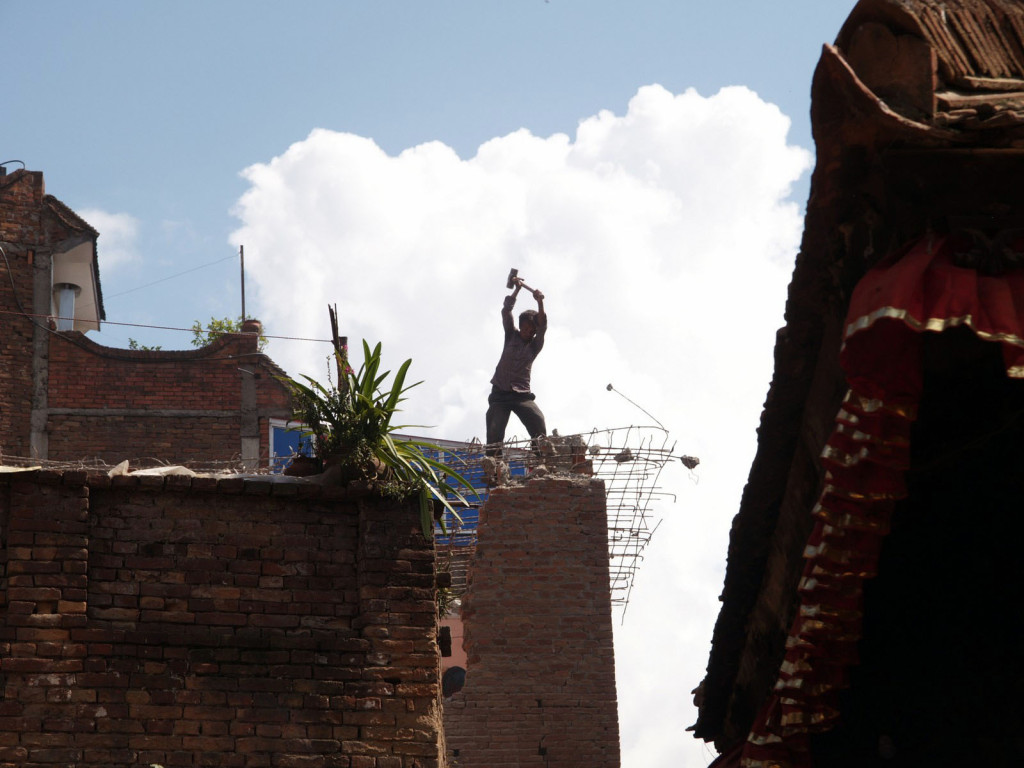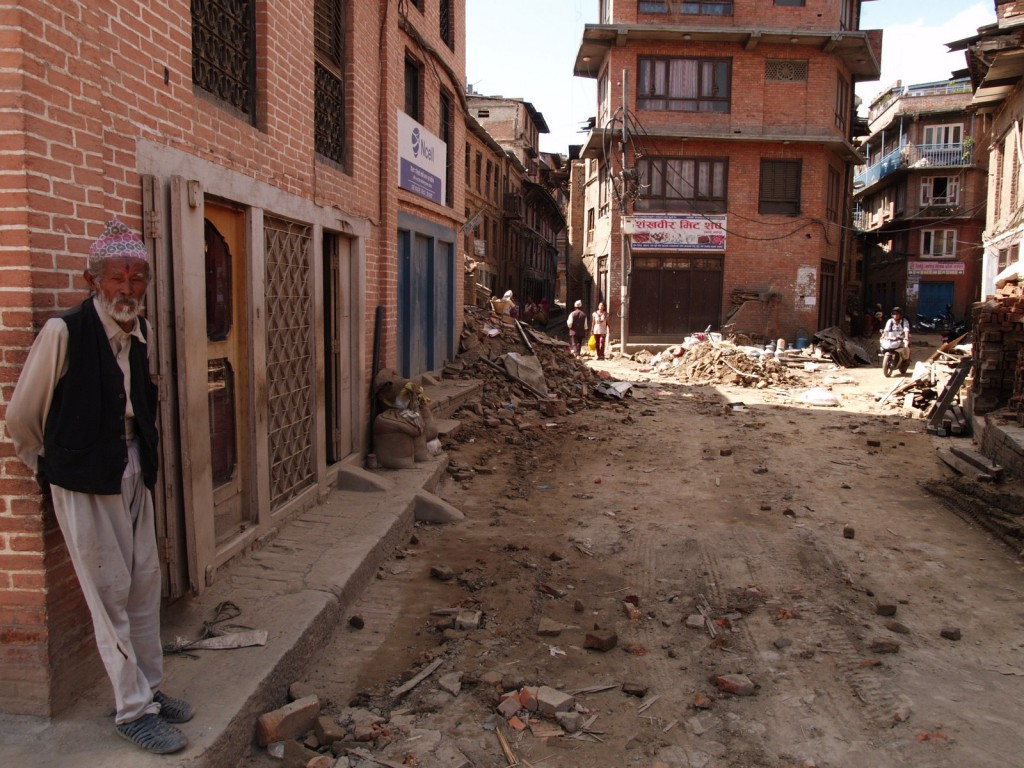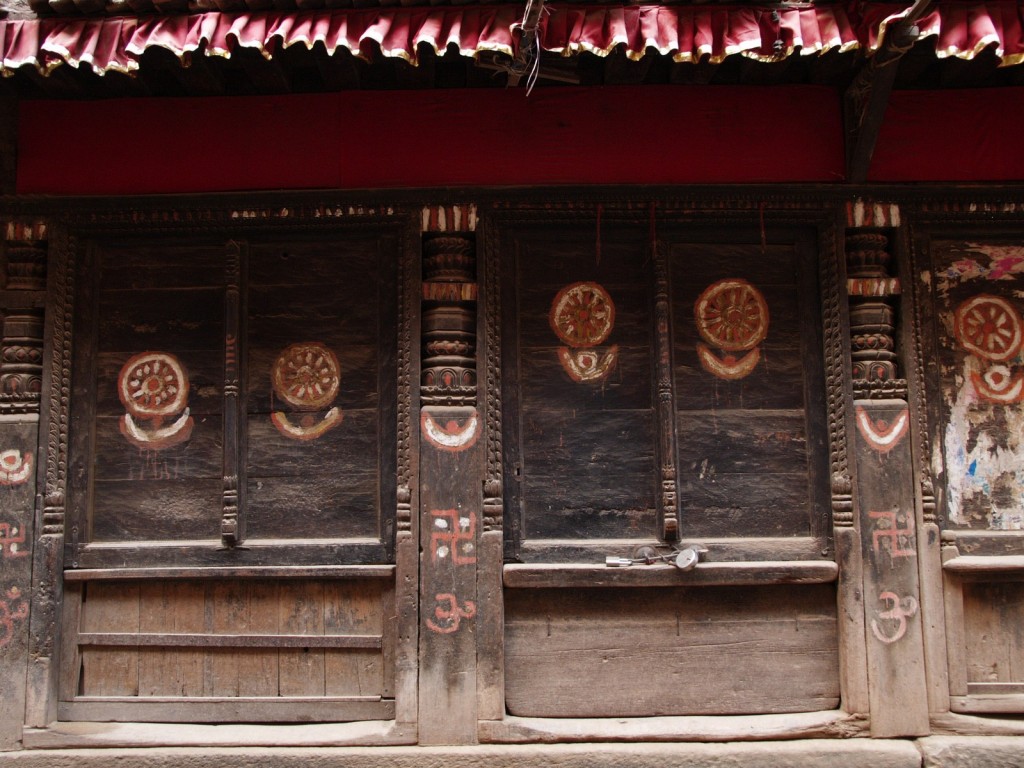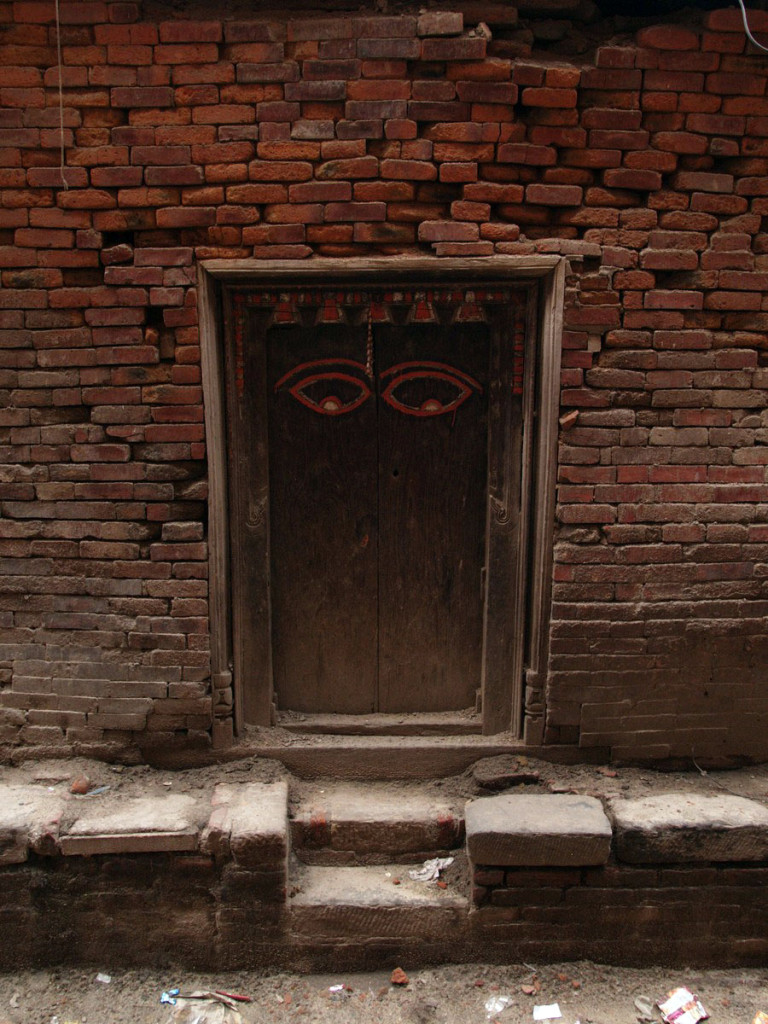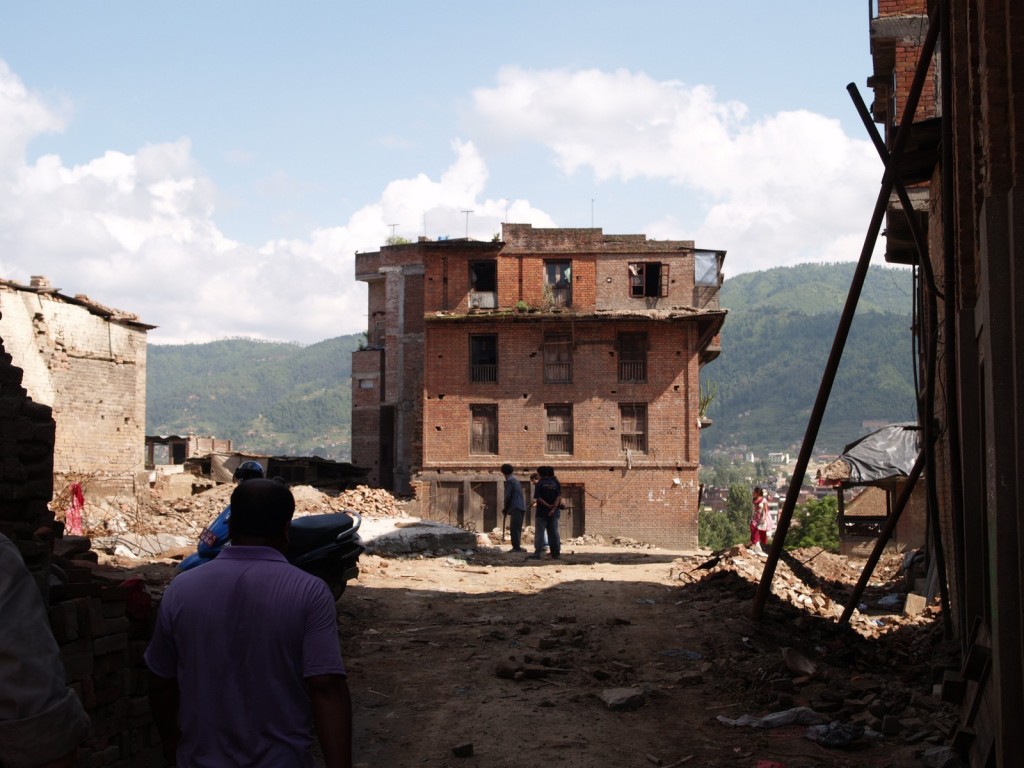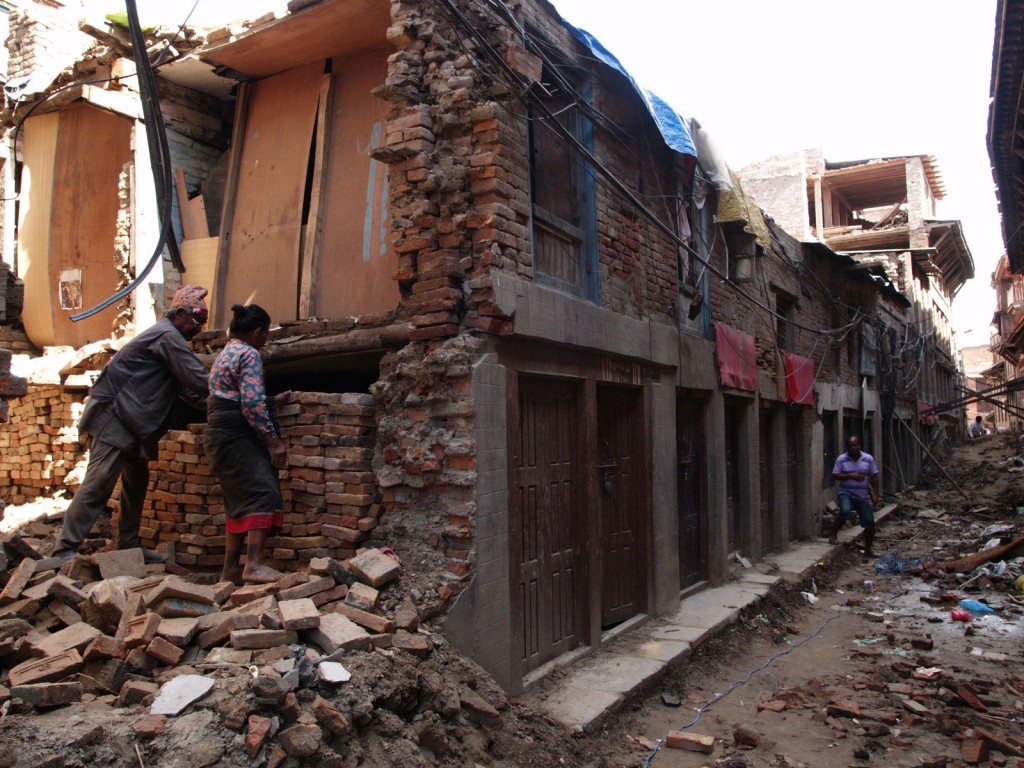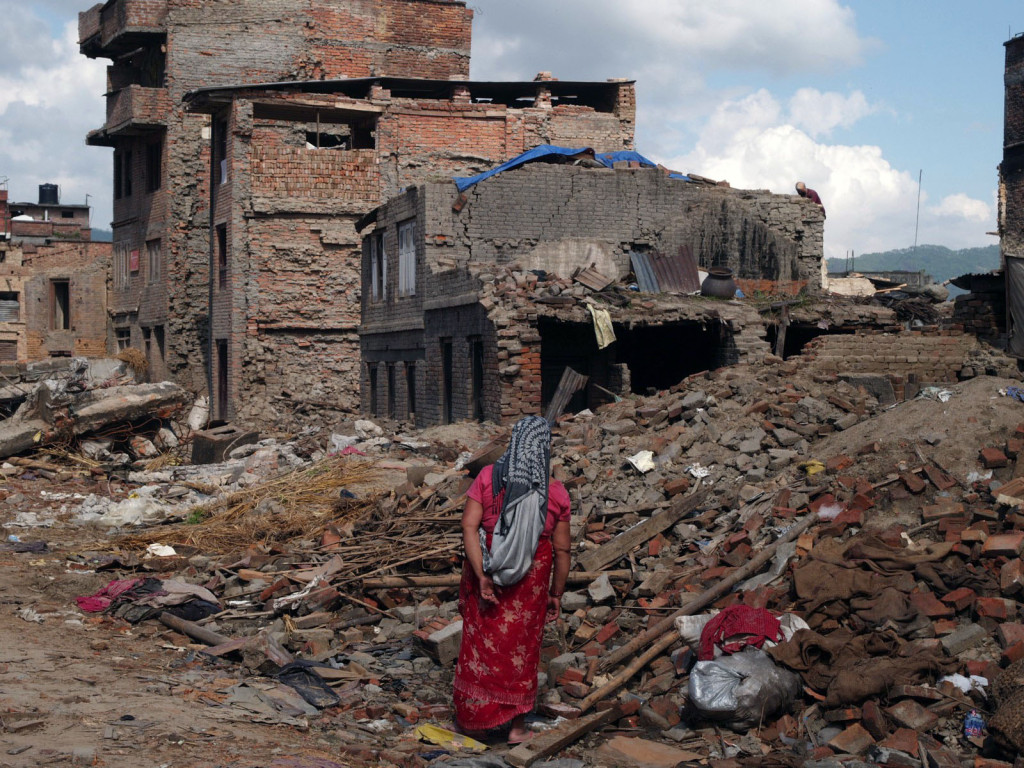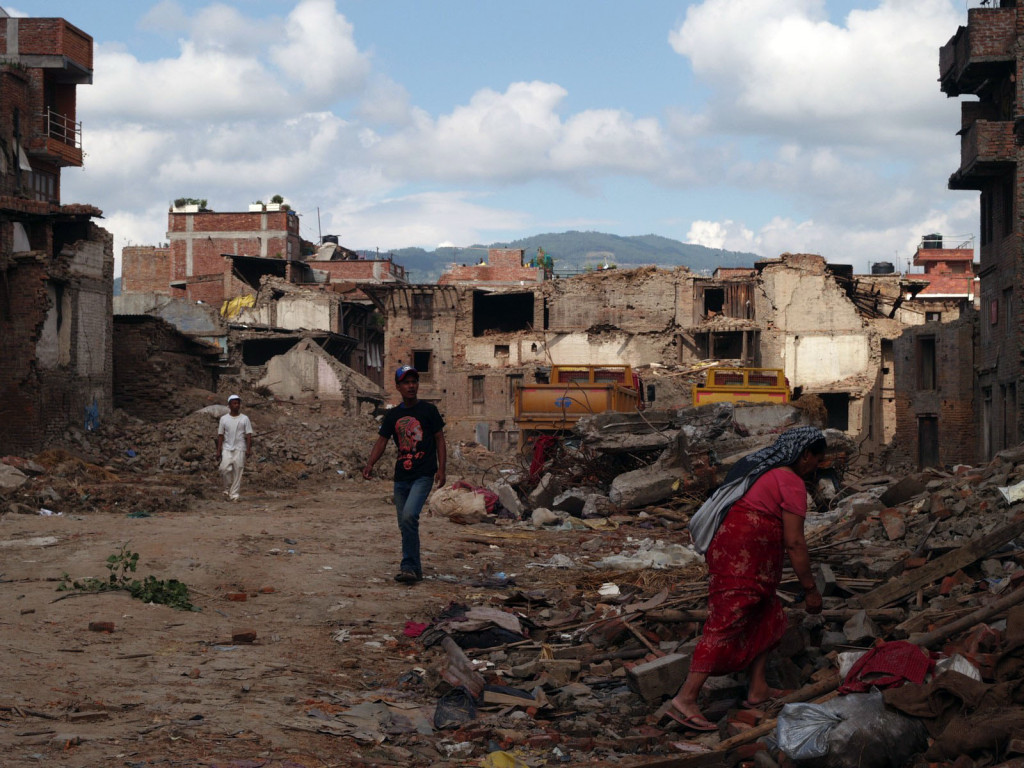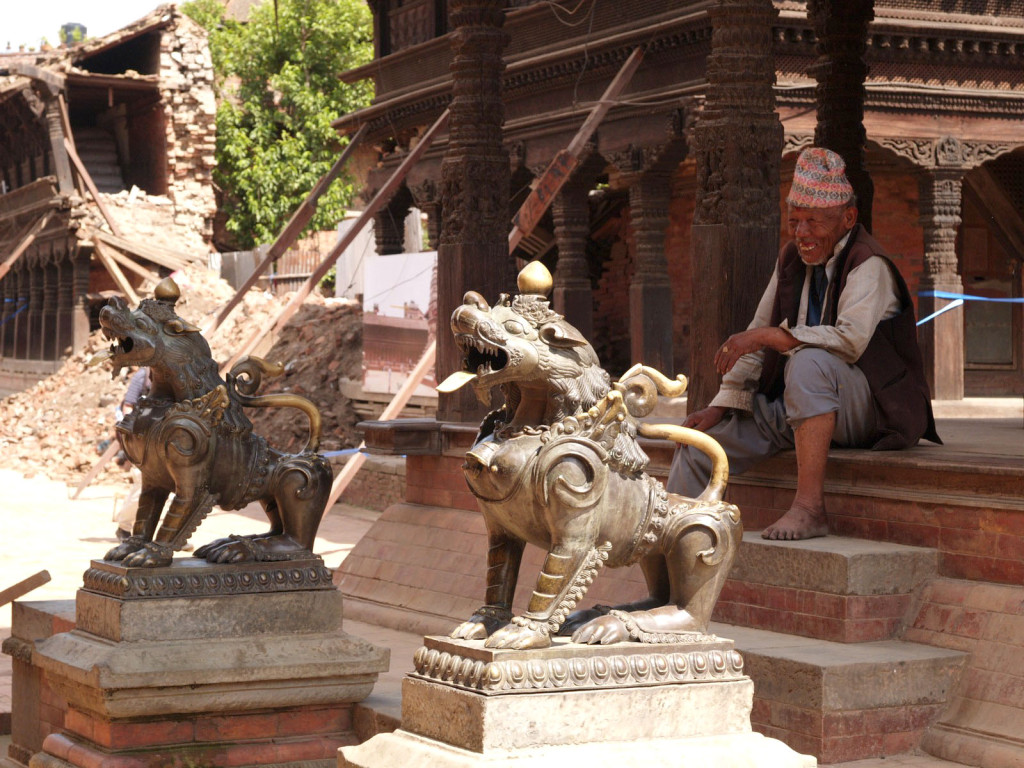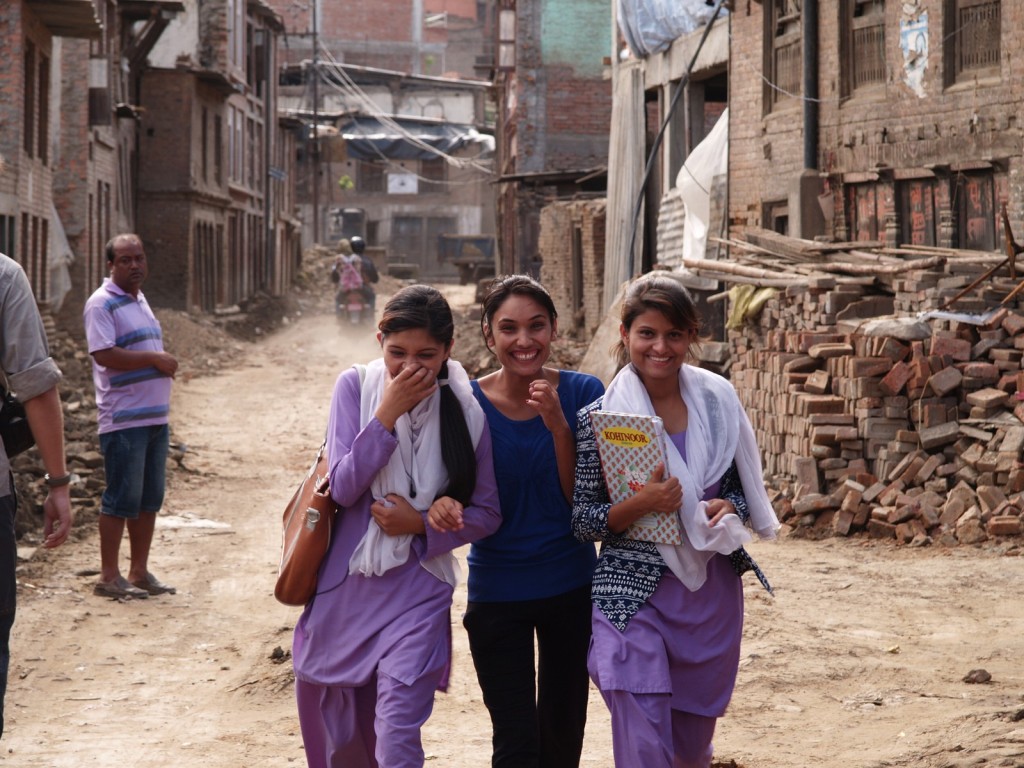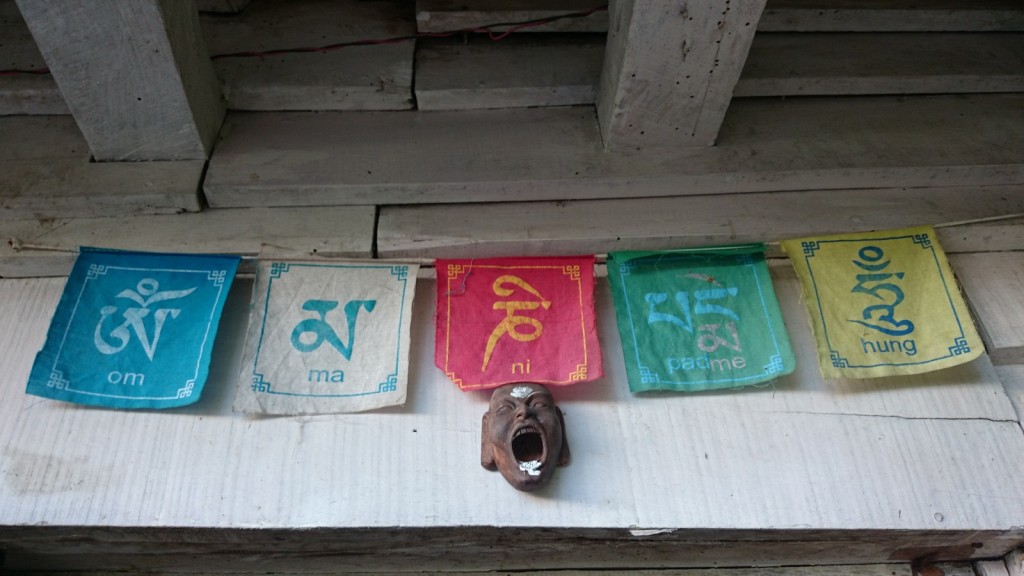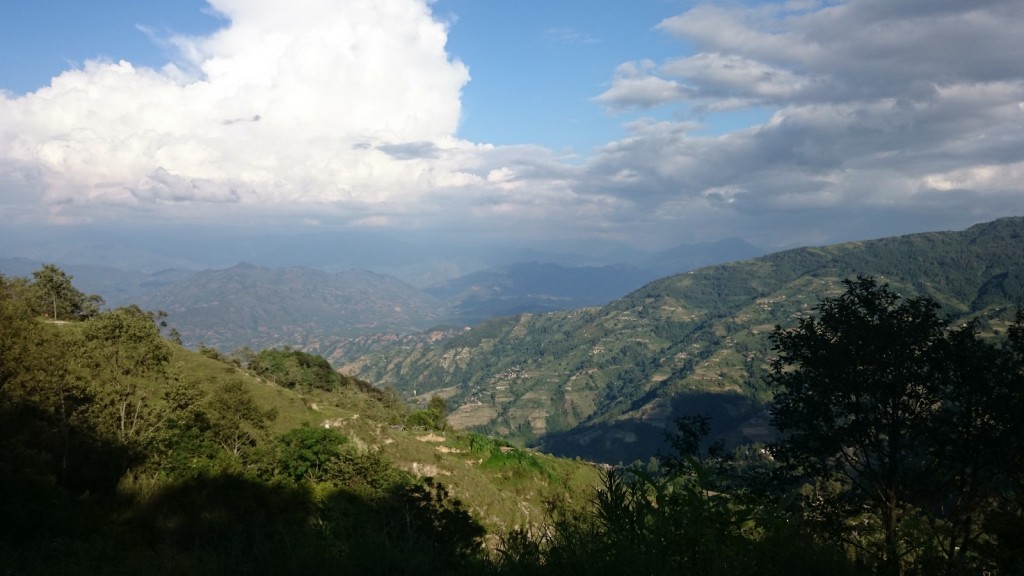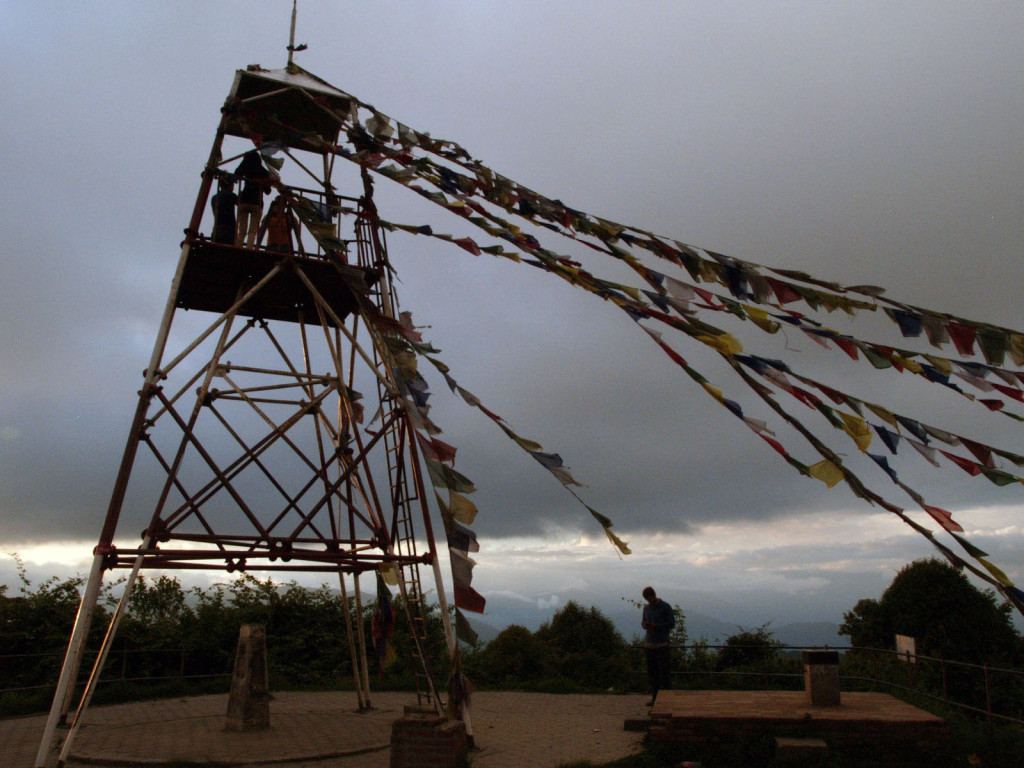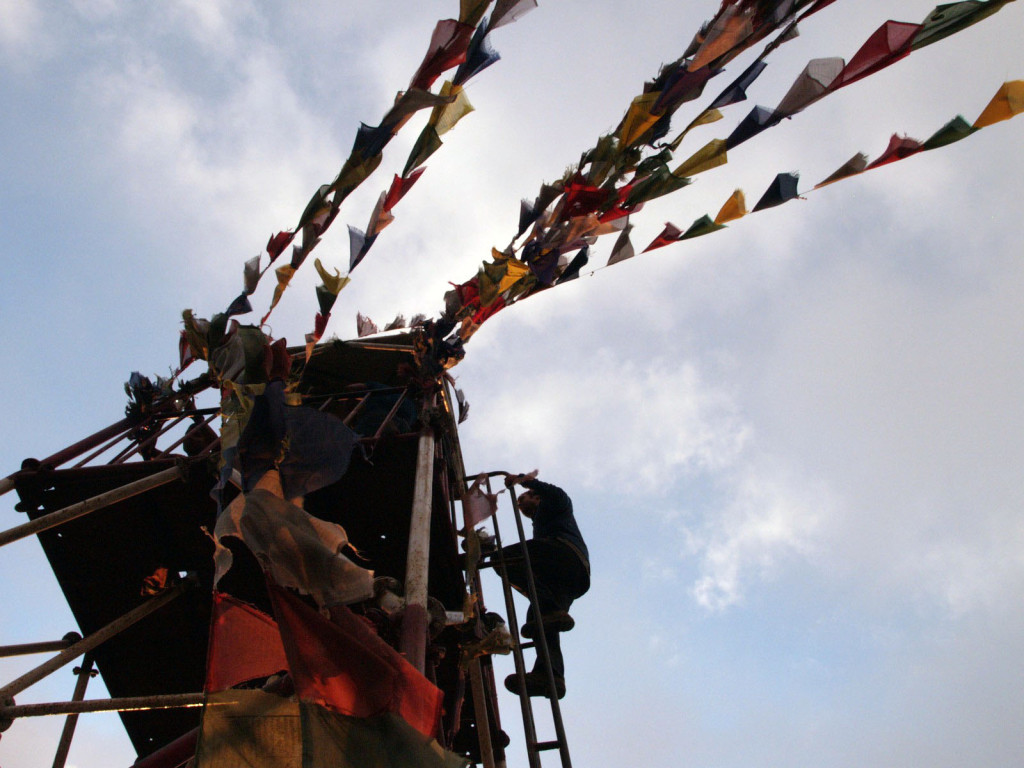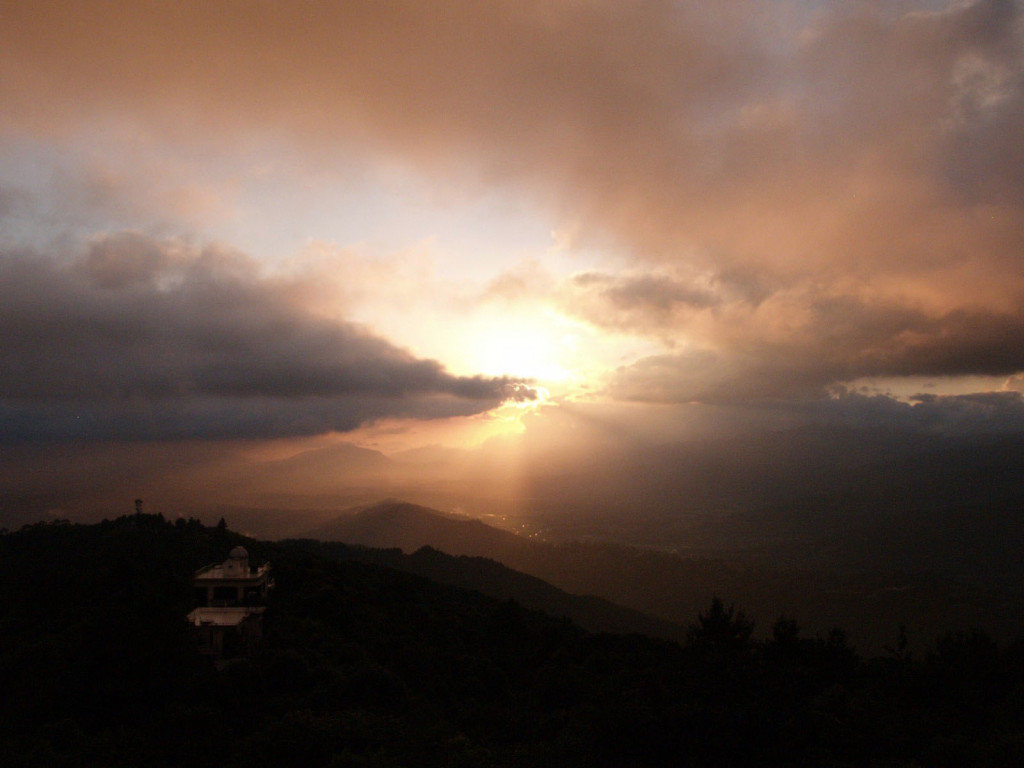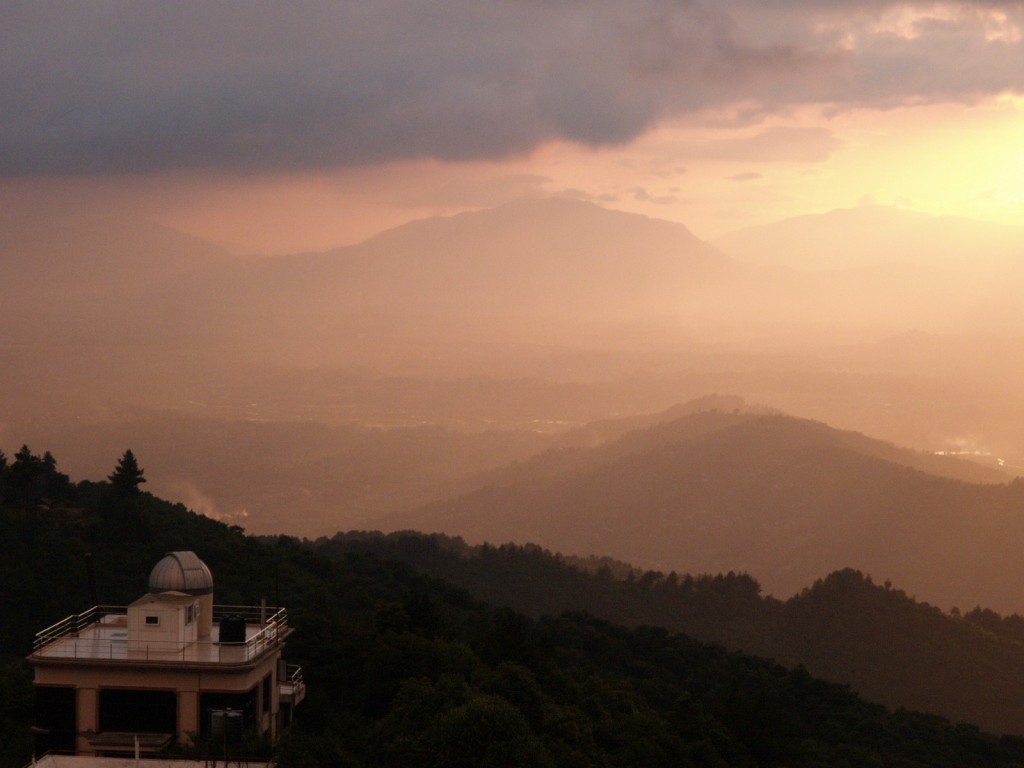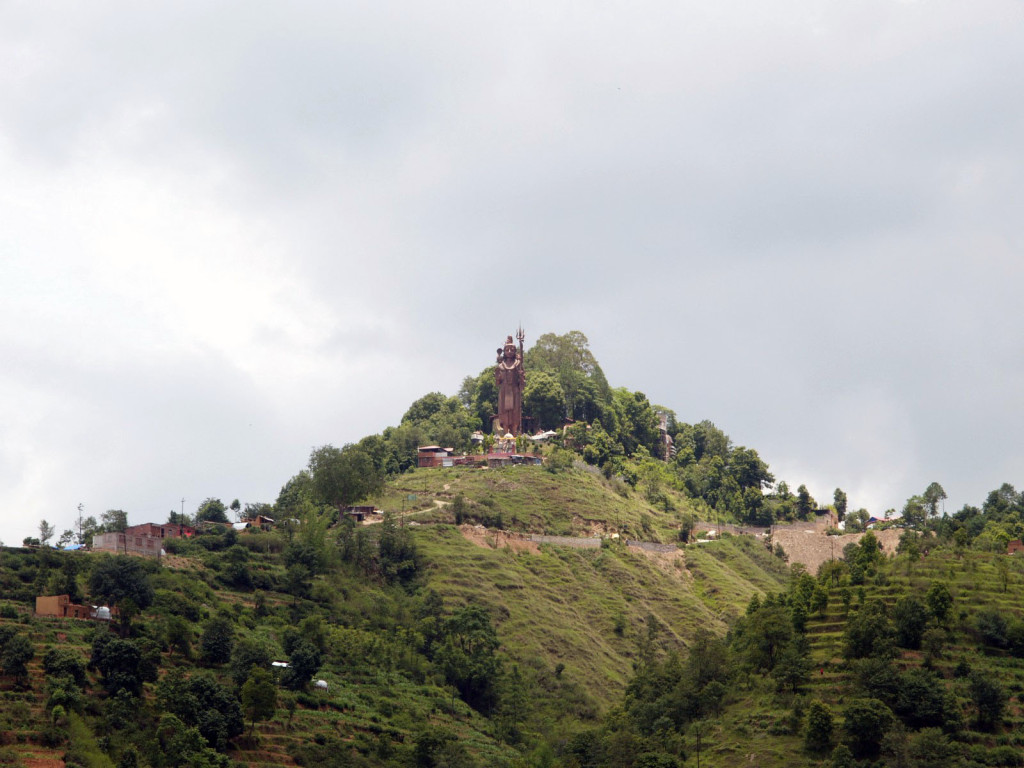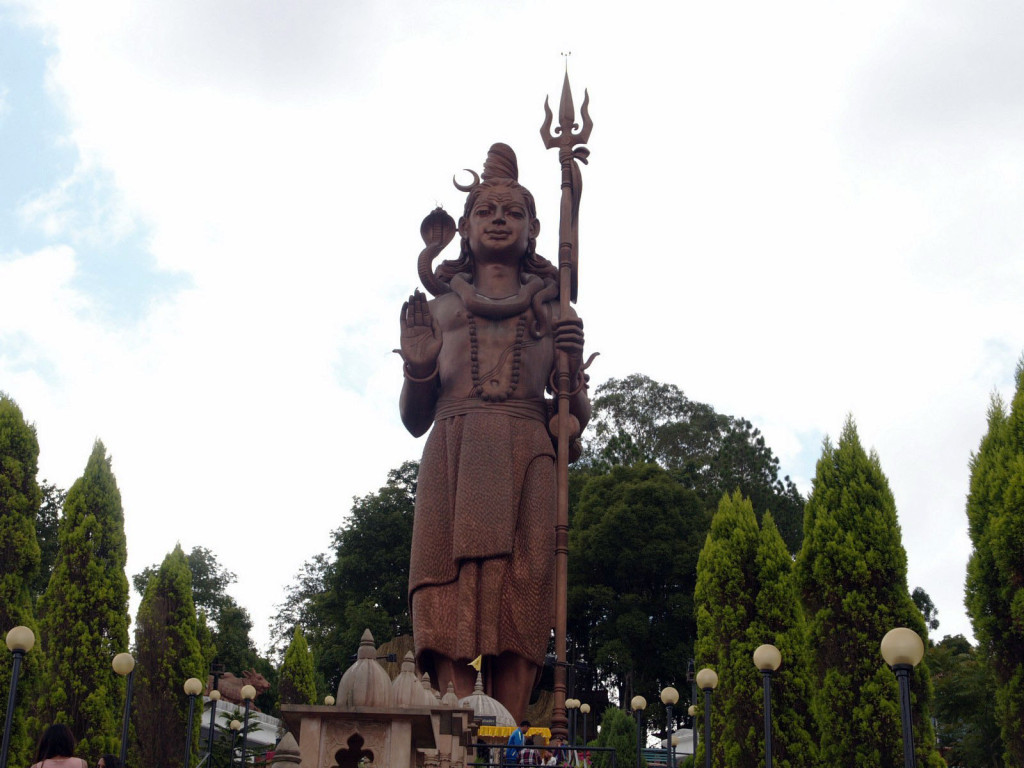We arrived in Kathmandu less than two months after the massive earthquake of 2015, and there was plenty of damage evident – many damaged buildings, and makeshift camps with displaced people living in tents, although for the most part the city seemed to be recovering. All the tourist hotels, sights and areas were open, and somewhat desperate for customers – as you can imagine, they’ve had something like a 90% downturn in business.
All that was left of this monastery near our hostel was the ornately decorated gate.
Although over 80% of the population are Hindu, there’s also a strong Buddhist influence, including from displaced Tibetan refugees.
Kathmandu is a city of alleys and lanes, where scooters and tiny cars push through the crowds of pedestrians, all hemmed in by shops and tall narrow buildings. Every corner and side alley holds surprises, history, and amazing details that are all too easily missed; tiny shrines (both Hindu and Buddhist) are scattered every few dozen metres. It’s fascinating to wander around without purpose or destination and take it all in.
The heart of the city, and one of its biggest tourist drawcards, is Durbar Square. Although parts of it were badly damaged in the quake, it has been reopened, showcasing many historic buildings such as the old king’s palace – from a distance, as significant parts of it are still off-limits.
One of the buildings in Durbar Square houses the Kumari, a living goddess, and the embodiment of divine female energy. She is a young prepubescent girl who plays an important ceremonial role in festivals and even politics, and just a glimpse of her passing by the window is supposed to bring good luck. We saw her briefly, but it’s forbidden to take photos.
Back on the streets of Kathmandu, we continued wandering through the shops, alleys, and rubble.
We found a refuge from the busy noisy city in the Garden of Dreams, an old mansion and formal garden built in 1920 – it hearkens of the old colonial desire to transplant a small slice of European life to a new land.
The next morning we set off with a few friends to see some more of the sights – such as the Bouddhanath, one of Kathmandu’s seven World Heritage sites. There was minor damage, and the peak of the stupa with the famous “Buddha eyes” was braced with bamboo scaffolding. Pilgrims walk around the base in a clockwise direction, spinning the prayer wheels that are hidden behind the colourful prayer flags.
Plenty of locals meet, talk, and make their devotions here.
Needing a break from the hustle and noise (the endless honking of car horns!) of the big city, we escaped into the countryside for a day – our first stop, the ancient sister city of Bhaktapur. Here, there’s another World-Heritage-listed Durbar Square (which translates as “place of palaces”), but the extent of the earthquake damage to both the historical buildings and the rest of the town was much worse.
Some of the intricate wood carving panels include depictions from the Kama Sutra.
Deeper into the town itself, however, the scale of destruction increases. Our local guide told us that even 2 months on, around 40% of the town’s population still hadn’t returned.
A lot of the remaining buildings had crudely drawn wards and protection symbols drawn on the windows and doors.
It was often surprising what had been completely destroyed, and what was untouched. Often a single house out of a row of many would be completely gone, leaving just a gap. Other times every house on a street would be damaged.
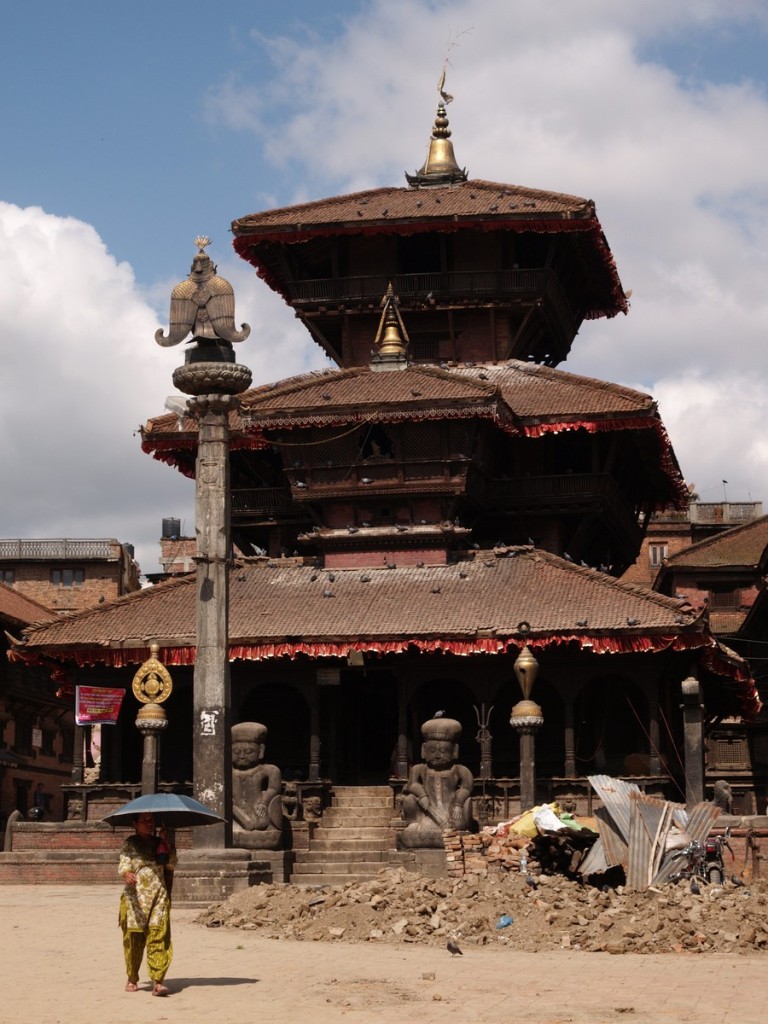
This old couple in particular was heartbreaking to watch – they were stacking bricks up without cement, to try and fill in a destroyed wall in their house. They would have been at least 80 years old.
On the east side of town, the whole area resembled a warzone. I can’t think of any other way to describe the scale of destruction.
Yet through all this, the people still find reasons to smile.
Moving on, we pushed up the east side of Kathmandu valley to the hill station town of Nagarkot. We were seeking the panoramic views over the Himalayas that Nepal is famous for, however with the monsoon season well and truly underway, the peaks were shrouded in clouds. It was still a beautiful area though, overlooking the valley.
A nearby watchtower provided a sunset viewpoint back over Kathmandu.
The next morning, on the way back in to Kathmandu, we made a small detour to see the largest statue of Shiva in the world (43.5 metres tall) – having seen the second largest Buddha statue in the world (Monywa, Myanmar).
Back in Kathmandu, we picked up our passports with shiny new Chinese visas attached, and prepared to farewell the city.

